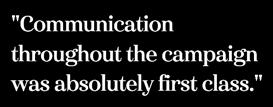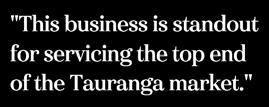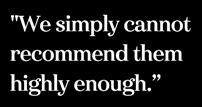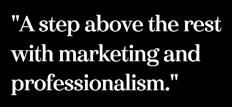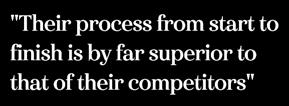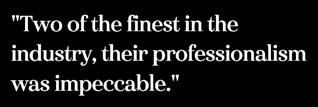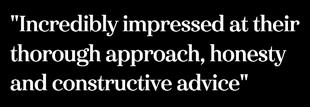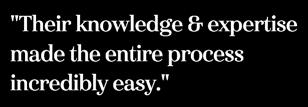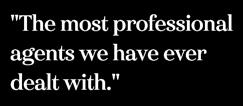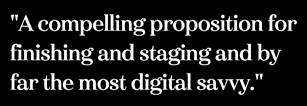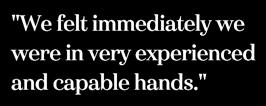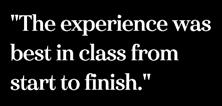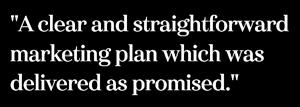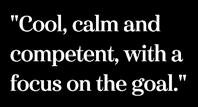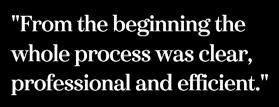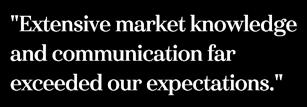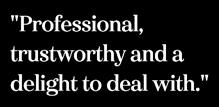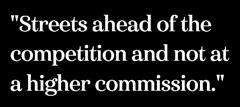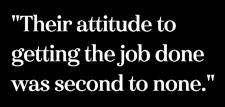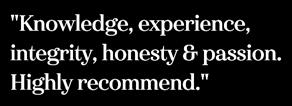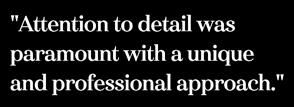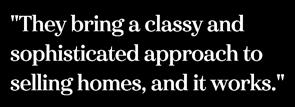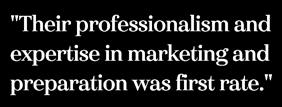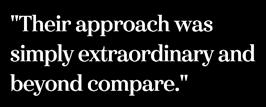

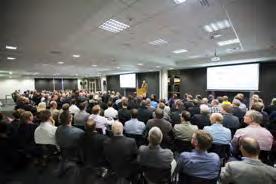
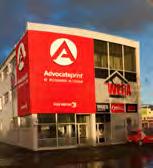













































































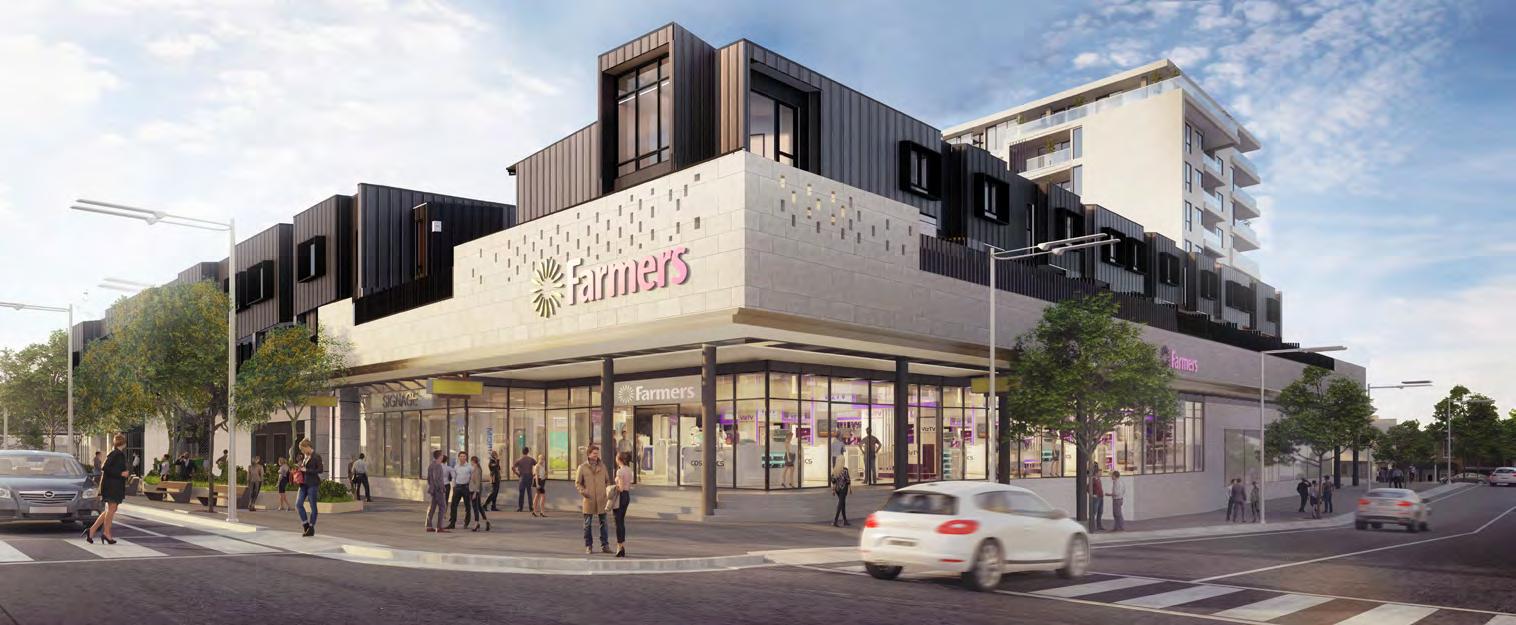



















































































By DAVID PORTER
With the release of Tauranga’s new Long Term Plan and major roading works springing up around the city, it is clear we are finally going to see some major changes downtown.
One of the most remarkable transformations is taking shape in Elizabeth Street as Farmers moves its new building towards completion.
We plan to have a more comprehensive review of developments next year as the building nears completion, but are pleased to have a progress report from the company.


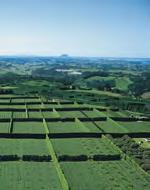

As noted by Brett Nicholls, project manager Elizabeth Towers/38 Elizabeth, it has been a challenging time in terms of keeping to the ambitious self-imposed deadlines we set for this build. “A build of this size would normally command a much longer schedule for completion. But as a business invested in Tauranga and with a heart for seeing the CBD transformed and revitalised, we have put extra resources in to ensure the build is as fast as possible.
“It’s incredible to think how quickly we have come to this point since 2018 when the first sod was turned. There is no question that we
would have been now open for business with the residential on the market had Covid not got in the way.
“But like everyone else in New Zealand, we are dealing with an evolving set of circumstances and making the best we can of it all.
Covid slowed the build rate
Nicholls said that as a result of the recently closed borders with Auckland and then Waikato, the build has slowed, but not as much as it could have thanks to the momentum the company built in the lead up before the lockdown.

“We are now starting to see some of the expertise we need from Auckland to be able to bring the development to completion. We are working very hard to land on a new set of firm dates for opening the retail, food and beverage terrace, and residential offering, in that order. We will announce these new dates as soon as possible.
As to food and beverage, Nicholls said the company was






excited
“The
not only to our development, but to the transformation and revitalisation
www.bopbusinessnews.co.nz
PUBLISHER
Alan Neben
Ph: 021 733 536
Email: alan@bopbusinessnews.co.nz
EDITOR
David Porter
Mob: 021 884 858
Email: david@bopbusinessnews.co.nz
PRODUCTION
Copy/Proofs/Graphic Design
Times Media – Clare McGillivray
Ph: (09) 271 8067
Email: clare@times.co.nz
ADVERTISING INQUIRIES
BUSINESS DIRECTOR
Pete Wales
Mob: 022 495 9248
Email: pete@bopbusinessnews.co.nz
EDITORIAL:
News releases/Photos/Letters: david@bopbusinessnews.co.nz
GENERAL INQUIRIES: info@bopbusinessnews.co.nz
Bay of Plenty Business News has a circulation of 8000, distributed throughout Bay of Plenty between Waihi and Opotiki including Rotorua and Taupo, and to a subscription base. www.bopbusinessnews.co.nz
Bay of Plenty Business Publications
309/424 Maunganui Road, Mount Maunganui, 3116
Bay of Plenty Business Publications specialises in business publishing, advertising, design and print media services.
The new Farmers building will make a significant difference to the look and feel of the central city.

We are delighted to share with you our first issue of 2022. As is our custom, we closed this January edition just before Christmas to meet the needs of our printers.
We would like to thank our readers and advertisers for their loyal support as we enter our sixth year as an independent business publication dedicated to covering the interests and concerns of the Bay of Plenty’s business community.
As I write, the Bay is preparing to receive an influx of Auckland visitors released after being locked down for four months. While some will undoubtedly go North, or to the South Island, there can be no doubt that hard-hit Bay hospitality and tourist businesses are hoping the northern influx will provide some business comfort.
Having spent much of my international career travelling with Kiwi politicians, I can perhaps be excused if I detect an element of cynicism in the ways in which our political leadership has approached this remarkable pandemic.
I have yet to be convinced of the merits of the “traffic light” system and can’t help feeling that Aucklanders have been released because the alternative was too dire to contemplate as tempers were running rather thin in our largest city.
I am proud to say that I have had my two jabs and even managed to acquire my vaccination certificate. I would add that, I don’t necessarily believe it works. And I have had only one flu vaccine in my life.
But I see no reason not to get jabbed. I do find it strange that some people are citing “freedom of choice” as a reason for not getting jabbed. They are often, I find, the same people who happily accepted free flu jabs for years.
What I do find a little odd is that, when I asked the person providing my Covid jabs how long the vaccination was good for, it became clear that

After years of delay and indecision, Tauranga’s civic precinct is set to be transformed, restoring the heart and soul of the city centre.”
– Anne Tolley
Civic precinct transformation on the way – p11
they actually had very little idea. The best they could suggest, was “about five or six months”.
Perhaps I have misunderstood something, but – in the welter of rather patronising TV and media pandemic advertising we are surrounded by, courtesy of the governmentthis point of longevity does not seem to have been made clear.
There are many exhortations for a stated percentage of the population to be jabbed, but I have seen no clear messages coming through as to how long the jabs are good for.
Don’t get me wrong. In the absence of a better alternative, I see no reason not to have a jab. But I do think our government should front up and with some honesty make it clear that this is a short-term solution that will soon have to be repeated, if that is in fact the case.
Surely it is far better to
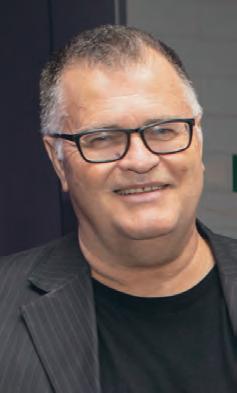
make this clear from the outset?
On a final note, it is great to see that Tauranga is beginning to see the fruits of long-delayed attempts to improve our central business district. Yes, it is annoying to find regular routes cut off by changes in roading as long overdue renovations are attended to.
But we are also proud in this issue to bring an update on progress being made on the new Farmers building, which on completion will make a significant difference to the look and feel of the central city. We wish you all the best for the festive season.
There are also indications [kiwifruit] employers are more in tune with the requirements of workers, particularly around flexible working hours.”
– Colin Bond
Bay’s primary sector enjoys strong returns at season’s mid-point – pg15

There’s no shortage of great ideas in New Zealand. But for an innovative bunch, we’re not the best at realising the full potential of our innovations, particularly when exporting them.
At James & Wells, we can identify your competitive edge, offer business strategies for specific markets and help you own and leverage your intellectual property to ensure no one steals the fruit of your labour.
With the impact of Covid-19 damaging global supply chains, Bay of Plenty-based businessman Paul Hewitt has created Source It New Zealand, as a solution for kiwi businesses to support each other and the domestic economy.
By DAVID PORTER
The kiwi entrepreneur has launched the digital platform to connect New Zealand businesses with manufacturers, distributors and producers here in our own backyard – reducing the need to navigate the broken global supply chain.
Hewitt told Bay of Plenty Business News that, from his own experience of owning distribution companies he had seen significant weekly losses as a result of supply chain issues in dealing with importers.
“I could see how bad it was going to get,” he said. “My concern was how can we develop a site with New Zealand importers to work with each other. The problem is a lot of companies won’t deal with other companies in certain ways, such as sharing a product.
“The whole purpose is you can anonymously put a job online and no one needs to know it is your company. Only a person who is a registered supplier with an actual subscription can then access the information right away because they get first mover status.”
Hewitt said the project had only
recently fully launched and no longer provided, as they did in the initial period, free advertising. But they were getting reasonable traffic through the web site.
“Being in a small country with a high reliance on importing goods, it can now be extremely difficult for Small and Medium Enterprises (SMEs) to get what they need manufactured, produced and distributed to keep their businesses running,” said Hewitt.
“What they may not realise is that they can actually source a lot of these goods from other businesses here in New Zealand – and without the high costs and delays they can expect from international suppliers in this new Covid world.”
Hewitt describes the site as a ‘large-scale reverse TradeMe for business’, which provides the link between New Zealand SMEs (customers) and manufacturers/distributors (suppliers), creating a platform for the customer to list the products they need, and allowing the provider to respond to relevant listings.
According to Hewitt, this effectively facilitates lead generation for the supplier, and potential suppliers of goods for the customer
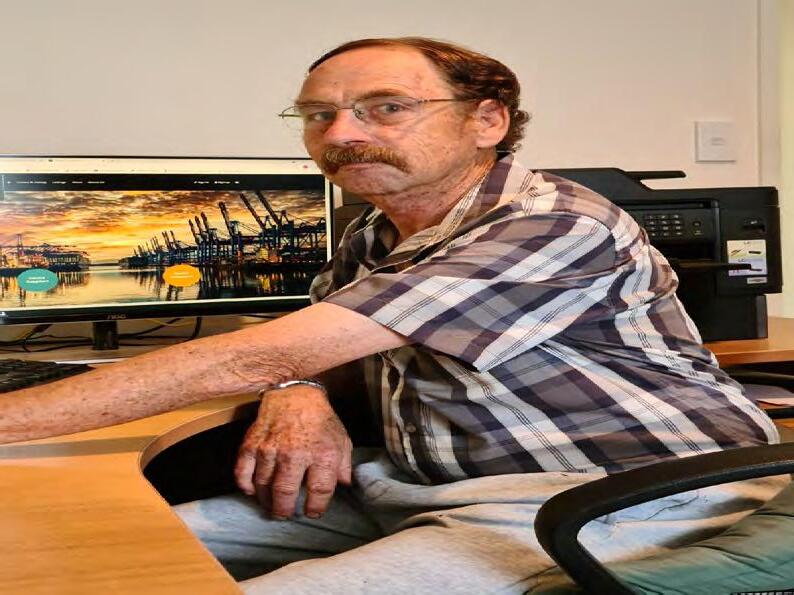
Being in a small country with a high reliance on importing goods, it can now be extremely difficult for Small and Medium Enterprises (SMEs) to get what they need manufactured, produced and distributed to keep their businesses running.” – Paul Hewitt
times. It is free for customers to post a listing on the Source It website.
For the manufacturer and distributor, Source It is a low-cost lead generation subscription. They sign up to Source It and receive notifications when customers post listings looking for the type of goods they can supply. Suppliers can then contact the customer and arrange quotations etc. Manufacturers and distributors pay a small monthly subscription fee to Source It.
“For years, New Zealand businesses have sourced parts and products from international suppliers. Source It will help to boost the New Zealand economy, support local businesses and even save businesses money in freight costs,” said Hewitt.
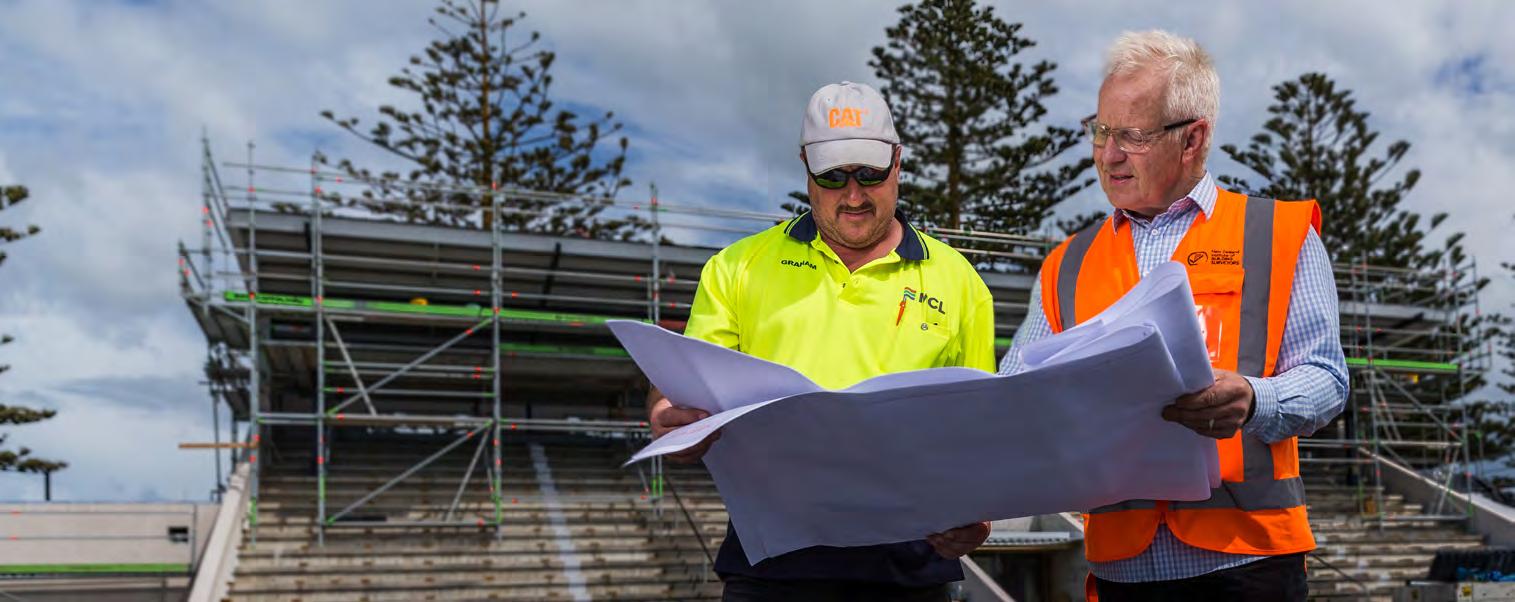


The agreement reached when Conor Quinn, Managing Director of Papamoa based business development consultancy BizStar International, and Alexander Born, Managing Director of the Born Alderman Group (BAG), based in Moscow, Russia, was to aim at targeting the biggest brands in the world.
QBy DAVID PORTER
uinn is a Papamoa-based entrepreneur, resident in Tauranga for more than 15 years. He is managing director of BizStar International, APAC Business Development Director for Born Alderman Group, and former chair of the Board for the Tauranga Chamber of Commerce.
They completed their first partnership video call in March 2020. As of November 2021, BAG conducts business development for 15 global brands outside their core local and domestic markets. These include Tesla, Netac, FERM power tools, Konix, Lenovo and Baykron.
For Tesla, named after the prolific 20th Century inventor Nikola Tesla, BAG now manages the business development function spanning three continents.
In the Asian Pacific (APAC) Region, discussions are ongoing with several collaborative partners and national retailers to reach agreements for New Zealand retail distribution and sale of Tesla Future Batteries, FERM Power Tools, Netac computer storage solutions and Konix gaming accessories.

Covid-19 challenges
As BAG’s APAC business development director, Quinn leads these negotiations, a challenging endeavour given the most recent Covid restrictions.
However, there are no restrictions on Quinn’s ambition for local business exporters. With a trusted base to work from in Moscow, and the associated


resource, he has also been in talks with high profile Bay of Plenty and national exporters that already have a footprint in Russia about large-scale market expansion of their products.
There have also been discussions with a number of organisations about new product entry into a region with the highest per capita of millionaires in the world.
Due to BAG’s extensive regional business connections and infrastructure, expansion into Eastern Europe, CIS and Baltic States has also been proposed.
With Quinn set to travel to Moscow in February 2022, to assist in the establishment of two significant business development programmes across Western Russia, the opportunity exists now for Bay of Plenty businesses to explore the feasibility of product market entry and/ or expansion in a place where New Zealand’s reputation for clean, green and ethical business practices is a dis-
The entry of Tesla batteries into New Zealand will give consumers greater choice in the retail battery market.”
tinct competitive advantage. The company says that ongoing liaison with the New Zealand Embassy in Moscow and NZTE (New Zealand Trade and Enterprise) regional experts will ensure full exploration of all funding support channels for New Zealand businesses that embrace the risk.

Despite the impact of the delta variant in Russia at present, it is expected that everything will be “business as usual” by March 2022, the company says.
Looking for a great living and social experience in your first year of study away from home? Wintec Accommodation Services has just the answer.
Our purpose-built Student Village is located in Hamilton’s CBD and right across the road from the Wintec City Campus. It’s just 5 minutes’ walk to Hamilton Lake, shopping and nightlife.
All meals are provided, so you can spend more time studying and socialising safely without the hassle of supermarket shopping and cooking while you get used to tertiary life.
We offer a welcoming, supportive environment where you’ll make new friends with fellow students. You’ll have your own independence but also have plenty of pastoral care support if needed – as is often the case during anyone’s first year away from home. And, if Covid is a concern (as it is for everyone!)
rest assured we have systems and community practices in place to ensure living in our Student Village is safe. Surveys of our students about our handling of Covid found that our residents who chose to lockdown in residence felt very safe, even more so than residents who chose to return home.
You get all of this for a similar price to what it would cost you to go flatting, without the need to buy furniture or pay extra for power for those flatmates who leave heaters on or take long showers! Compare our fixed-weekly cost with StudyLink’s survey of flatting costs in Hamilton!
To find out more about your home away from home next year simply Google ‘Wintec Student Village’ or phone 07 834 9224.

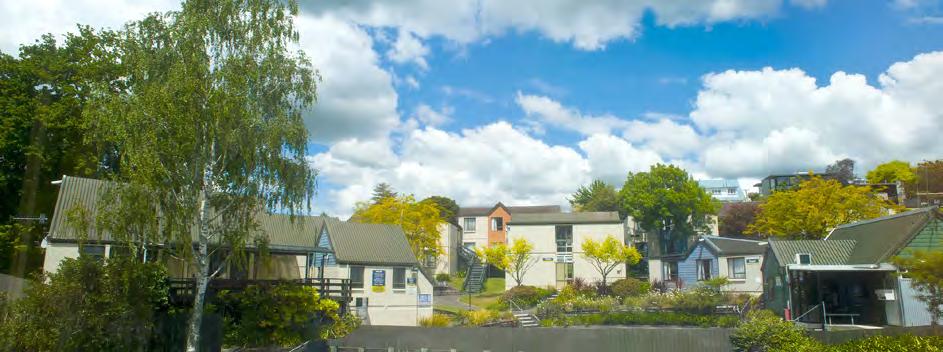
Studylink https://studylink.govt.nz/starting-study/thinking-about-study/cost-of-living.html

Leading Bay of Plenty print company, Kale Print, buys Rotoruabased Advocate Print.
Bay of Plenty print companies Kale Print and Advocate Print have sealed an acquisition deal.
Peter Lloyd, general manager of Kale Print, says, “We are absolutely delighted. This significant milestone for the company will better enable us to service our existing customers in Rotorua. In addition, we can expand our offering there.”
The Merrick family founded
Advocate Print in the early 1980s. Noel Merrick, managing director of Advocate Print, will continue as a consultant over the summer.
The company retains its name. Merrick credits the success of the business to the Advocate team’s hard work and commitment.
He says, “For us, Kale Print was a really nice fit in terms of its family ownership, environmental drive and the overall culture of the business. They have a young team with a real passion for print.
“Purchasing new print technology is a challenge for print companies like ours. It has become harder to keep reinvesting in plant. However, in terms
of investing in new technology, Kale Print is an industry leader. This can only be good for Rotorua and the wider Bay of Plenty community. Really for our customers, not much will change apart from offering more print capabilities.”
Smooth transition
Brent Kale, operations manager for Kale Print, appreciates the smooth transition in the acquisition. He says, “It’s been an easy journey and Noel has been great to deal with. Kale Print has enjoyed a great relationship with Advocate Print for a few
years now. We work as Advocate Print’s trade partner for large volume print work.
“Both companies use the same management information system. As a result, we expect a straight forward full integration. They have a great team too, multi skilled across all departments.”
Lloyd adds, “We’re really pleased to invest in Rotorua. The effects of Covid-19 continue to challenge the local community.
“However, we know this time will pass. We can see the green shoots of planning for a time next year when we can have overseas tourists again.
“We will be there to support our local community.”
Launched last month, the
‘Join the Vegelution’ campaign might seem like a bunch of animated fruit and vegetables starring in a cute video, but the underlying messaging is anything but a joke… and it’s already gaining traction for one of Australasia’s leading packaging houses.
Jenkins Freshpac Systems, who market the Enviro Pac™ range, launched the ‘Join the Vegelution’ campaign and cleverly take a humorous look at a serious topic.
General Manager Jamie Lunam explains: “We’re extremely proud of our status as industry leaders in innovative sustainable packaging, but to cut through the industry clutter and noise to get our message across we knew we needed to take an innovative approach. So why not let the veges do the talking for us? We figured, if they could, they’d be demanding better packaging options.”
The video campaign features a bunch of fruit and vegetables waging a crusade for healthier,
more environmentally friendly living conditions and provides a perfect entry point into the Enviro Pac™ range that is the hallmark of Jenkins industry inroads.
The campaign allows Jenkins to relaunch Enviro Pac™ in the market. “As the industry leaders in innovative sustainable packaging we also wanted to build brand awareness with our growers and retailers and see if we could influence and drive consumer demand for Enviro Pac™.’
Dubbed the better, more environmentally friendly and sustainable packaging option, the range includes paper packaging, plastic-free fibre netting, cardboard packaging, eco labels, fibre trays, bio film and more.
It’s all part of a bigger picture long term strategy by the industry heavyweights to continue to lead the way.
“With decades of R&D into sustainable packaging we love being first with new technology and industry developments, being active in all major industry bodies and advocating at central and local government level to

help influence genuine change in more environmentally sustainable packaging solutions,” says Jamie.
“Our Enviro Pac™ range, launched a decade ago, is at the forefront of where our industry is heading.
“It’s about providing a much more circular approach to packaging in horticulture and with new products being launched
When
you are positive, you see opportunities instead of obstacles.” – Confucius
Two local professionals working in the mental health space are pooling their knowledge and resources to offer twice the assistance for mental health issues in the community.
Lindsey Rayner from HumanEx offers Mental Health First Aid courses to businesses and organisations throughout the country. Rachelle Hawes from the Positive Mindset Challenge has created an online Programme which is relevant for both teenagers and adults. Together they are collaborating with the business community and education sector to get their message out there that help is available.
Rayner and Hawes believe the role that teachers, employers and employees play in creating thriving communities is essential. Good management, positive lessons at school and good mental health all go hand in hand so although their offerings differ they are both in the early intervention stage:
Mental Health First Aid Aotearoa is an internationally accredited programme. The course is an invaluable tool for every workplace that teaches participants how to recognise signs of distress in others. It also provides a robust system for First Aiders to utilise to help those in need. Part of it is designed to significantly help reduce suicide and is packed full of excellent information and tools to manage all kinds of situations. The course is certificated for 3 years.
The Positive Mindset Challenge focuses on how our brains work and how to use them to our advantage to create more happiness and better outcomes in our day. Underlying this teaching is that our brains are designed to work at their best when positive. Our intelligence, creativity and ability to brainstorm new ideas along with memory and productivity are all significantly enhanced when we’re feeling positive and happy. Alternatively our productivity is significantly reduced when we are worried or stressed. We make the best decisions, generate our finest work and receive excellent outcomes (and are also most successful) when we are feeling great.
One of the many things Rayner and Hawes both agree on is that you must take time to look after your own mental health because self-care is essential. It’s like the safety briefing on planes where you put your own oxygen airbag first before helping those around you although it seems contrary to most people’s instincts because you want to protect your family/friends first. But how can you help them when your own mental health is on the rocks?
Everyone is struggling at the moment, even people working in the mental health sector. Rayner and Hawes use their own tips and learning to keep their positivity levels up and they also draw a lot of strength from their partners, families and pets.
within the range all the time, it’s vital we make sure there’s strong industry awareness of this range.”
The ‘Join the Vegelution’ video has already received over 3500 plays since its soft release in October. It can be viewed here: www.jointhevegelution.co.nz
For more information on endto-end packaging solutions go to www.jenkinsfps.co.nz
Unfortunately, not everyone has strong family ties to lean on like these two amazing ladies, but consider your family of choice as your adopted whānau who you can korero with. Who can you talk to, are there friends, workmates or others in the community that you can reach out to? Just ask for help, someone will always be there to take your hand. Sure, it can be hard sometimes, but your mental health is worth it.
If the Mental Health Toolkit or 30 Day Positive Challenge aren’t quite the right fit for you Rayner and Hawes can suggest other resources/services. They can even provide a friendly ear at a café because they both love having a chat over coffee. Check out their two programmes helping to make New Zealand a happier place!
Rotorua’s adventure tourism industry is poised to take off thanks to the re-establishment of a world-class training course.
The Adventure Tourism course, originally run for 20 years through Waiariki Institute of Technology and later Toi Ohomai, produced a huge amount of talent and was a major reason for cementing Rotorua as one of the premier adventure tourism destinations in the world.
The course has been on a three-year hiatus, but a new generation of students will breathe life into the industry once the course is back up and running in March 2022.
Canopy Tours General Manager Paul Button says Rotorua boasts many unique attractions and the geography here lends itself to being an outdoor adventurers paradise.
“There are activities like rafting on the waterfalls of the Kaituna, mountain biking in the Whakarewarewa Forest, the activities in the trees like Canopy Tours and the Treewalk as well as the activities on the lake with jet boating, sea kayaking and stand up paddleboarding.
“Over the past three years, the destination has been hamstrung by a lack of trained outdoor leaders to support this popular and fast-growing adventure industry,” Button says.
In a bid to combat this, a collection of 20 adventure
leaders have been working with Toi Ohomai to fill the labour gap that was created when the adventure tourism course stopped in 2018. Button has been one of the drivers to get this course back and up and running.
“Rotorua is a magical place and has so much potential to deliver the best visitor experience in the world. Over the years we have seen fewer and fewer people from Rotorua apply for our guiding roles and we have had to travel NZ recruiting from other outdoor schools and polytechs.
“Our best employees have been from Waiariki and Toi Ohomai, they are professional, highly skilled and passionate about their home.
“Currently, we have six graduates employed and one is in our senior leadership team. There was something special about that adventure tourism course and the people who taught, I am thrilled we have it back,” Button says.
“There is no reason that every guide we employ shouldn’t come from Rotorua and this course.”
The course is part of the Sport and Recreation portfolio, headed up by Ruth Naidoo, who has been working alongside industry leaders to build a curriculum that is focused on
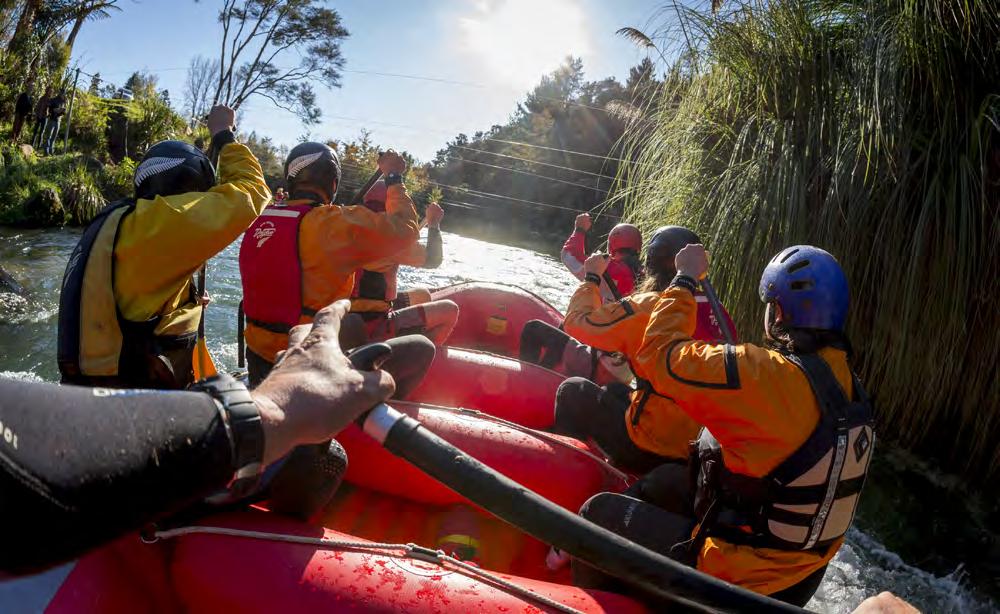
teaching the skills the industry needs to employ graduates.
She says the re-establishment of the course is exciting and that she can’t wait to see her students fill the local labour shortage of outdoor leaders.
“It’s exciting and inspiring to work with the 20 representatives from the industry,” Naidoo says.
“It is humbling to see the passion within the industry, they are driven to make this course a success and help their industry thrive in the years to come.
“They have committed to being hands-on and to support
the students in work placements, field trips and even classroom activities.”
Naidoo says world-class tutors will be teaching this course and inspiring students.
“Nikki Kelly is a world champion rafter and extreme kayaker, and Stevie Walls has worked in the tourism industry for 20 years and is also a veteran NZ touch player.
They bring the perfect blend of teaching excellence and real-life experience. These guys are really positive role models for our rangatahi.
The course is aiming to deliver the best tuition possible and the key to its success
will be making the most of the world-class products Rotorua has to offer. The activity operators that have been working with Naidoo range from long-standing businesses Skyline Skyrides, River Rats, Zorb, and Velocity Valley, to new start-ups including Paddle Board Rotorua and the NZ Whitewater Academy.
NZ Whitewater Academy co-founder Rob Collister says they are 100 per cent committed to making the course a success.
“These students will be our future outdoor leaders and employees. I don’t see a future without them.”
The course is now called the NZ Certificate in Outdoor and Adventure Education. It will include kayaking, rafting, ropework work, mountain biking, bush skills, sustainability, hospitality skills and a whole lot more. The course will teach the stories of Rotorua and have Tikanga Māori embedded throughout. It opens as a Level 4 course, but will have scope for Level 5 and a degree pathway in future. Enrolment is now open and the course starts in March.
Learn more about the New Zealand Certificate in Outdoor and Adventure Education
It was a glorious afternoon. The sun was shining, and a gentle breeze blew across the sea as you enjoyed a fine Pinot Gris. Then it hit you…bam! The idea for the new product you’ve been searching for! Or perhaps it was morning, and while tucking into your scrambled eggs and sipping your steaming Americano it came to you…wham! The idea for a new service that will really see your business take off!

> BY BEN CAIN
Ben Cain is a Senior Associate at James & Wells and a Resolution Institute-accredited mediator. He can be contacted at 07 928 4470 (Tauranga), 07 957 5660 (Hamilton), and benc@jaws.co.nz.
hatever the circumstances, if you were inspired over the Christmas and New Year break to do something new, then I recommend (if you haven’t done so already) to undertake some IP due diligence before investing further time and money in your idea.
If your idea is for a new product, then here are some issues you might need to consider:
• Do you know if your product exists already? Have you conducted any Internet searches, for example, to see if it does? Have you searched the patents, designs and trade mark databases of the Intellectual Property Office of New Zealand to see if the way your product works,
or your product appears, is already protected?
• If your product does exist already, at least in general terms, what makes your product ‘new’? Does it involve a new way of making or doing something, or does it just look different to the competition?
• If your product doesn’t exist already, have you told anyone about it? If you have, did you get/need them to sign a non-disclosure agreement before telling them? If you have involved any third parties in the development process so far, have you signed non-disclosure agreements with them?
• Have you made any drawings for your new product? If you have, then have you
kept them somewhere safe? It might be early days, but have you made any prototypes and shown or tested them in public as yet?
Are you planning on making the product yourself, or sub-contracting manufacture? If the latter, are you

service, then issues you might want to consider are:
• Do you know if anyone else is offering the same or similar service to your existing and potential customers?
• If someone is already offering a similar service, what makes your service differ-
There is one thing stronger than all the armies in the world, and that is an idea whose time has come.” – Victor Hugo
planning to make your product in New Zealand or overseas – perhaps in China? If your idea is for a new
ent? Is it underpinned by revolutionary software, or does it involve a new model of delivery?
• If your service doesn’t exist already, have you told anyone about it? Did you get/ need them to sign a non-disclosure agreement before telling them? If your new service involves a third party developing software for you, for example, do you know who owns the software code?
Whether your idea relates to a product or a service, another issue you might need to consider is the name of your new product or service and the corresponding domain name (if applicable). If you have some name options in mind, have you conducted any domain name or Internet searches to see if someone else is using an identical or similar name?
Have you searched the trade marks database of the Intellectual Property Office of New Zealand, and perhaps the New Zealand Companies Register, too, for identical or similar trade marks and company names?
If you are thinking you will want to export your product or service in the future, have you also searched the trade marks databases of the overseas countries you might want to sell into?
As you can see from the questions I’ve posed, having an idea is just the start of your IP journey. Do not be deterred, however, because if your idea is one whose time has truly come, we at James & Wells will do everything we can to help you on your journey.
It’s a New Year and Trustpower Baypark are excited to announce the line-up of events for the first quarter of the year.
Baypark Speedway
The Speedway season is in full-swing now and we have a number of speedway meets throughout the season to keep all of the family entertained. All speedway dates can be found at www.bayparkspeedway.co.nz.
To enjoy watching the races in style, we have several Corporate Boxes available to host your guests comfortably. Our corporate boxes offer an exclusive, spacious and comfortable environment all with outdoor balcony for up to 20 guests accompanied with bar service and catering delivered by dedicated staff.
Polo in the Bay
Polo in the Bay is coming to Tauranga on Saturday 22 January.
The inaugural event features some of New Zealand’s most talented Polo players going to head-to-head in their provincial colours and this fresh Polo format brings you closer to the action – there isn’t a bad seat in the house.
There will be a range of hospitality options available, from a casual picnic-style Family Zone, to Private Marquees and the VIP Pavilion with specialty bars, catering and lounge areas.
Polo in the Bay features include:
• Movember Brunch (R18)
The Polo Lawn (R18)
• VIP Pavilion (R18)
• Private Marquees (R18 –limited spaces)
• Free Family Zone (unlicensed – all ages)
• Après Polo – Eat + Drink
+ Play at our Official Dining Precinct Tickets available from www.polointhebay.co.nz
NZ Bridge – NZ National Bridge Congress
New Zealand’s Premier Bridge Event. After the dis appointment of not being able to hold a National Congress for the past 2 years, there will not just be a new venue, but there are many other changes as well.

The 35th New Zealand National Bridge Congress is the premier bridge event in the annual calendar and was last attended by over 700 players in 2019. In 2021, it will be held from Thursday 10 February –Thursday 17 February 2022 with events open to all levels of players, from grand-master to Novice players.
Battle of the Trades IV
BAY BOXFIT is proud to bring to you Base Up BATTLE-OF-THE-TRADES IV –The Bays Best Charity Boxing Event.
A very popular Corporate Boxing show which showcases tradespeople challenging themselves by navigating their way through 3x 2 min rounds against one another
This is a BLACK TIE event so be sure to dress to impress on Saturday 19 February 2022. Tickets available from www.ticketbooth.co.nz
Not long to go till Armageddon is here once again! Infa-

mous and one of the largest fantasy events in Australasia, Armageddon will be here on Saturday 26 February – Sunday 27 February 2022.
Armageddon Expo is New Zealand’s ultimate entertainment event, featuring gaming, fantasy and multimedia events.
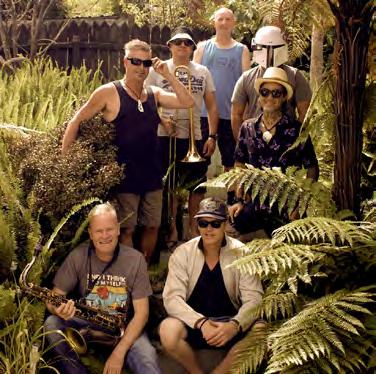
Armageddon will be a great day out for all the family – if you have not experienced an Armageddon yet – this is your chance!
Tickets will be available from 17 January at www. iticket.co.nz
Salmonella Dub
Aotearoa’s Dub & Bass heavyweights, the space-weaving SALMONELLA DUB will be here Saturday 5 March.
The multiple platinum-selling and award-winning D&B pioneers are performing across Aotearoa, delivering what promises to be a phenomenal two-hour multimedia dance floor set of the Dub’s classics, alongside a bag of new tunes from their forthcoming album RETURN TO OUR KŌWHAI.
Joining the band on stage for this auspicious spring tour are old time members Conan Wilcox and Tiki Taane, plus special guests Whirimako Black and Laughton Kora.
From their very first live appearance in 1993, to these forthcoming Aotearoa Spring Tour shows, passion, creativity, energy, driving bass beats and pure joy are the signature hallmarks of Salmonella Dub live.
Tickets available from www.salmonelladub.com
Benee
Indie-pop superstar BENEE will visit every corner of the country, hitting 10 different towns and cities joined by special guests, THERE’S A TUESDAY.
BENEE recently released her newest single ‘Doesn’t
Matter’, her first taste of new music since her debut album ‘Hey U X’ hit the shelves in November 2020.
The ‘Supalonely’ singer has had an incredible 18 months, from releasing the album, to sharing it with Kiwi crowds on a sold-out eight-date tour in late 2020 and being named on Forbes 30 under 30 Asia 2021 list. Worldwide streams in the billions have made her one of the most exciting new acts to have emerged anywhere.
BENEE is the dreamy voice of a disaffected generation. She broke out around the world with “Supalonely,” an alt-pop ballad about unwanted isolation, a sentiment that found her a lot of friends in 2020. Billions of streams later, she returned with the guestpacked, yet highly personal ‘Hey u x’ and a southern summer of sold out shows around her home country.
She has not only performed on a string of major television shows including The Late Show with Stephen Colbert, The Tonight Show Starring Jimmy Fallon, The Ellen DeGeneres Show and Late Night With Seth Meyers, but appeared alongside doting fan Elton John on his Apple Music Rocket Hour radio show.
Supporting BENEE, will be one of New Zealand’s most exciting up-and-coming indie rock/pop bands, THERE’S A TUESDAY.
Picked to support by BENEE herself, the group consists of two female front women, Nat Hutton and Minnie Robberds, both on guitars and vocals, with Angus Murray on the drums and Joel Becker holding it down on the bass.
After receiving critical acclaim for their debut EP in November 2020, followed by a busy summer festival season, THERE’S A TUESDAY are poised to have a massive 12 months.
Get ready to experience BENEE on Sunday 6 March before she embarks on a massive global tour! This is not to be missed.
Tickets available from www.livenation.co.nz
Tauranga’s Premier Venue
Trustpower Baypark is Tauranga’s Premier Venue for conferences, meetings, entertainment and exhibitions. Offering a complete package in one convenient location that features state of the art meeting rooms, in-house catering, audio visual services, professional conference organiser (PCO) and marketing/promotional services.
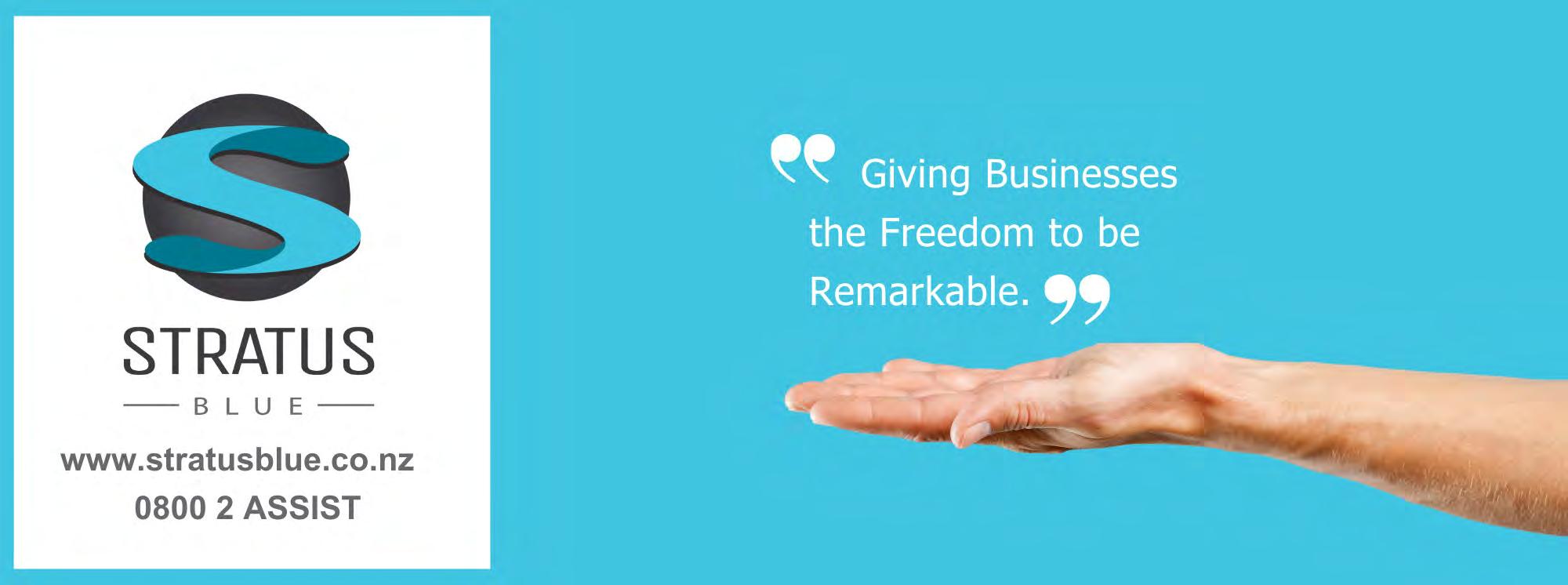
We all want to have nice things, which is why we work hard and save up for them. However, for those who are light on cash but heavy on impulse, there are other options such as Hire purchase and lay-bys.

> BY NICK KERR
Nick Kerr is a Business Advisor at NJK Advisory Ltd.
He is also director of International Private Investigations Ltd.
Nick can be reached at nick@nzipi.com
ire purchase and lay-bys for large items are not a new thing, but lay-bys are paid in full before you pick them up and hire purchases go through a credit check and affordability screen before they are approved, so there is a layer of protection for both financier and consumer however there is a new type of lending that does not.
You would have seen options like afterpay, Zip and others on Trademe and plastered on shop fronts I’m sure, these allow you to spread your purchase over four “easy” payments, no credit checks, no interest and no fees. These may sound like very attractive
options, but if you look at the effects of the ‘pay after you buy’ products and who they are aimed at, they seem a lot less favourable.
Hire purchase and lay-by are designed for people who have large expenses or items to buy that could not be reasonably expected to fit into the average family budget, such as a vehicle that breaks down, an animal with unexpected health issues or urgent orthodontic work for a buck toothed teen.
However, the “buy now pay later” offering appears to be aimed at providing mainly luxury or at the least nonessential goods to low income people that they would not oth-
erwise be able to afford.
Even more of a concern is that in Australia, restaurant meals and alcohol shop purchases are now able to be purchased via the “buy now pay later” payment model. Many financial commentators are predicting that this will be commonplace in New Zealand as soon as Q1 2022.
The afterpay alter native
Lately I have repossessed many cars from people, and when they have filled out their means assessments, have put “afterpay” as a large proportion of their weekly outgoings. What this shows is that people

You would have seen options like afterpay, Zip and others on Trademe and plastered on shop fronts I’m sure, these allow you to spread your purchase over four “easy” payments, no credit checks, no interest and no fees.
are putting impulse or luxury purchases ahead of their necessary or core expenses as a priority.
After speaking to the people that we repossess from as to how they got themselves in to the financial pickle that brought me and my kind to their door, the common response was “I wanted the thing and it seemed so easy to
buy I couldn’t help myself”.
The lesson is that if you can’t afford to buy something now and you have a fixed income what makes you believe that you will be able to afford it later, especially when you are purchasing multiple items using this system?
All this seems to do is spend more and more of your income before you have earned it, in
order to buy things that if you had to save for you would not have bought any way! It is common for people to attach less value on future earned money than on past earned money, but I can tell you that debt is debt no matter how it came about and irrespective of the mindset held when you incurred it. Just a thought.
As we head into 2022, there is a sense of both trepidation and excitement for many business owners as to what lies in the year ahead.
The pandemic has caused many employees to challenge their assumptions about work. This disruption heeds a new era and, while it can be daunting, it is a catalyst for opportunity for business owners. So how do business owners and decision makers foster the entrepreneurial spirit within their business? Nurturing the entrepreneurial spirit has to come from within, and from the top.
Whether you’ve got two employees or 2,000, setting an example for your team is a surefire way to trigger more responsive, innovative ideas from those around you.
In the same vein, I would encourage business owners to consider abandoning more complex and traditional hierarchical structures to give way to more cross-functioning operating models.
It builds a culture of open questioning to challenge the way things have traditionally been done and fosters entrepreneurial spirit within the business.
How to build understanding
When your people have more understanding of the business and the needs of the customer, the more they can understand what needs to be done. Because at the end of the day, the strength of your business comes from your people, no matter what level they are. It took a global pandemic to kickstart widespread change.
One of the lasting effects of the pandemic will be remote work being an expected reality for many employees.
Working from home arrange ments can be mutually beneficial for staff and businesses by removing proximity as a barrier for entry and supporting a more balanced life.
Businesses can now start looking nation ally for remote positions typically filled with local talent; thereby, placing skills and expertise of talent above all other considerations.
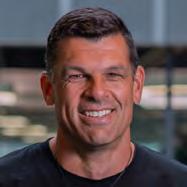

In fact, we’ve just announced a new flexible work programme where employees can choose to work fully remote, from the office or in a hybrid model. If they have a good internet connection, they can work from basically anywhere if they choose.
To stay ahead of the curve, business owners need to understand how to support their employees in the new nine to five to foster a modern, inclusive and rewarding life for their employees. Don’t let memories of the ‘old world’ impact your policies or you’ll risk being left behind.
The competition for new talent has never been so fierce. Right now, the job market is hot with companies across most industries battling against skill shortages. Companies are needing to consider how they will position themselves as attractive workplaces in a climate reshaped by “the new normal”.
Recruiting and retaining top talent isn’t an easy problem to solve and there are many layers to it. Unfortunately, there is no silver bullet to this solution.
> BY CRAIG
HUDSON
Craig Hudson is Xero’s managing director for New Zealand and the Pacific Islands.
Part of supporting your employees is creating a supportive and engaging work environment, whether this is in the office, remotely or a combination of the two.
Having a people-focused culture built on long-term career development and upskilling opportunities will not only gain, but help you to retain the best talent.
It’s imperative that you focus on retaining your quality talent and give them reasons to stay. Things like flexible working, business culture, role clarity and recognition are some of the more impactful things to be focused on.
Put simply, the way forward is about recruiting people, not roles. By designing roles for future growth and development, employers will be able to attract talent with a drive to be a part of something bigger – those who have a desire to drive change and innovation.
So, once you’ve got the right people in your business, how do you keep them engaged?
Employees led by entrepreneurial spirit want growth opportunities and to feel like their work delivers meaningful impact – to the business, themselves, and the community.
This could include flexible working arrangements, a focus on wellbeing, improved benefits, company and team culture, opportunities for growth, the stability of the company or industry – all on top of compensation.
Businesses, big and small, that prioritise their employees will be the winners in this new upcoming era. Those who don’t risk being left behind as the best talent moves elsewhere.
Utilise data and tech-enabled systems to support your employees learning While none of us can predict what 2022 will hold, it’s
guaranteed digital adoption will continue to have a transformative role on the way we do business.
Adapting to change
Digitisation and adapting to change are the keys to unlocking increased productivity. With improved flexibility comes faster, more efficient business outcomes.
Many businesses who were traditional at their core have realised how powerful technology can be to help them streamline processes, collaborate remotely and even open up new revenue streams.
A recent study, “Picking up the pace: trends in small business technology adoption and use”, which uses anonymised and aggregated data from more than 300,000 small businesses on the Xero platform across New Zealand, Australia and the UK, found one in three small businesses said they were ‘technology delayers” and not keeping up with their peers’ technology use.
Simply put, these businesses will find themselves falling further and further behind as technology and app adoption paves the way for post-pandemic growth.
You may feel your business isn’t so different now if it isn’t embracing tech, but the gap is widening each month.
An artist’s render ofTauranga’s Civic Precinct,looking towards Durham Street. On the left is the new library and community hub building,on the right are a proposed museum and exhibition and events spaces and in the centre is the new CivicWhare.
After years of delay and indecision, Tauranga’s civic precinct is set to be transformed, restoring the heart and soul of the city centre.
By ANNE TOLLEY, Tauranga Commission Chair
Following decisions taken as part of this year’s long-term plan (LTP), Tauranga City Council will soon be initiating a number of projects which will help to reinvigorate the CBD, but the most exciting developments will come via a refresh of the civic precinct masterplan, which was adopted on 6 December. Investment in our civic facilities is long-overdue and thanks to the masterplan, we now have a clear vision of what the civic precinct – the area bounded by Willow, Wharf, Durham and Hamilton streets – could look like.
Subject to our advisors coming-up with a workable construction and financing plan and community consultation via a long-term-plan amendment process early next year, we can now look forward to a progressive transformation of the city centre before the end of the decade.
The refresh includes the library and community hub approved in this year’s long-term plan, together with a

whare (public meeting house), a museum and an exhibition and events space.
The Baycourt Theatre remains, but would be upgraded, and the civic precinct now extends through Masonic Park to the waterfront.
Heart of community goal
These spaces will provide opportunities for learning, exploring, debating, relaxing, entertaining and remember-

ing the past and will combine to create a city centre that is truly the heart of our community – a place for locals to gather and connect with each other and for visitors to seek-out, because it captures the essence of Tauranga Moana.
A hotel and conference centre is also envisaged on the western side of Durham Street, but would be largely privately funded.
Funding of the precinct development will be a key factor, but we anticipate that at least half of the estimated cost of $270-300 million will come from outside sources.
The masterplan was prepared by Willis Bond, in consultation with tangata whenua, and specifically considers the location’s significant cultural history as the original area of Māori settlement.
This was a place where people gathered to discuss important matters, welcome visitors, learn, trade and enjoy everything Tauranga Moana has to offer. It’s therefore appropriate
Funding of the precinct development will be a key factor, but we anticipate that at least half of the estimated cost of $270-300 million will come from outside sources.”
that the masterplan aims to restore the original purpose of the land.
Meanwhile, the current Council buildings on Willow Street will be demolished later this year to make way for the new library.
The customer service centre and
central library activities which currently operate on the Willow Street site will temporarily relocate to the Goddards Centre, where work is well underway to transform the existing mall into a welcoming community hub – a centre of learning and discovery which reflects the cultural significance of that site.
The customer service activity will open to the public there by the end of January, while the library will move to its new home towards the end of March.
Most activities housed in the Willow Street building, including the offices of the commission and Chief Executive, have already moved to the existing council building at 306 Cameron Road, but the intent is to bring all administration staff together in a new leased building to be constructed at 90 Devonport Road, which is expected to be ready for occupation by the middle of 2025.
All of which says that we have some exciting times ahead!
SPONSORED BY VODAFONE BUSINESS
Local businesses are booming in the BOP and creating a better environment in which to live, work and play. Innovative companies are creating new opportunities in the region – this is being further stimulated with great connectivity technology. Trimax Mowers is one such business benefitting from Vodafone’s increased investment into the region.
Trimax is based in Tauranga. Originating in the Bay of Plenty in the 1980’s, the business was originally developed for the booming New Zealand Kiwifruit industry.
During the 1970’s New Zealand kiwifruit boom the Bay of Plenty underwent a complete transformation. Large areas of pasture became orchards almost overnight and numerous businesses competed to service the new industry.
A real ‘Kiwi business takes on the world’ success story
It was during this time Trimax founder Bob Sievwright innovated the Gamma Flail™, a new type of flail for mulchers which were an outstanding success.
The Trimax ProCut was later developed, along with a range of rotary mowers for various turf applications. This founded a new era for Trimax and the company began exporting in 1985. Demand grew from groundsmen and turf managers who had heard of the mowers’ reputation for durability, quality of cut and low maintenance.
Today the company designs and
manufactures a wide range of rotary and flail equipment, which has become the benchmark worldwide, from England’s Windsor Castle to US PGA Championship courses.
Now the business is a global player servicing Australia, UK, EU and US markets – all from a hub in Tauranga. Half of the team of 140 is based in the Bay of Plenty, with the rest overseas and spread across New Zealand. Establishing efficient communication across the organisation’s widespread structure offers both challenges, and opportunities to shine.
According to Trimax CEO Michael Sievwright, the challenges of doing business in the Covid environment in the last couple of years have meant finding new efficient ways to communicate within the company. “We have a strong market in New Zealand, but a lot of our development is focused overseas,” he said.
“Our local team concentrates in particular on finance, strategy, administration and engineering.”
With manufacturing and distribution arms in different countries on different continents, travel and communications have been impacted by Covid-19 restrictions. From Michael Sievwright’s perspective, this is all the more reason to focus on strong client interactions.
“Export businesses have to adapt,” he says. “And we have to remain customer focused.”
He says video calls have become a normal part of business. “We have to be able to have good con-
nections without awkward lags, not just when you’re on fibre, but also when you’re away from the office as well.”
“We now often make sales presentations remotely, whereas once we would have had our team in the market. Some of those habits will probably carry on ‘post-Covid’, if there is such a thing as ‘postCovid’,” he quips.
“These new ‘habits’ require good connections, good internet and good quality systems driving them in the background. The tools available now make it possible.”
Asked about what makes the Bay such a good place to do business, Michael is enthusiastic: “Although I’m from Tauranga, I’ve lived and worked around the world – US, UK, Auckland.
“We have the best port in the country, great export businesses and small businesses we can all learn from – it’s a great ecosystem.
“As far as lifestyles are concerned, the Bay offers a lot of diversity; In our team we’ve got people who love the beach and others who love having space around them; Some like a city feel, but not too big a city. But there’s more to Tauranga than the beach,” he points out.
This has seen Trimax attract people with a diverse range of skill sets to their team. These skill sets have enabled the business to grow and deliver globally.
From a logistics perspective, proximity to the port has been a real advantage for Trimax’s export container shipments.
And when it comes to real-world product testing, how refreshing to be able to do trials on a horticultural block 10 minutes from the headquarters. “Having grown to a global entity, it’s great to still be able to go back to our roots on a Kiwifruit block in the Bay after 40 years,” says Michael.
Trimax’s success is increasingly empowered by the connectivity solutions Vodafone supplies.
Vodafone’s technology providing real stimulus
Vodafone is helping the BOP region to thrive via remarkable technology. In February 2021, Vodafone announced a turbocharged network investment program, spending hundreds of millions of dollars annually to better connect Aotearoa. This included building or upgrading 800 cell sites nationally, in addition to adding more than 200 cell sites being built by the Rural Connectivity Group (RCG) over the coming 2-3 years.
Despite navigating the challenges of Covid-19 and additional health and safety measures, Vodafone upgraded 38 mobile cell sites and built 14 new cell sites across the region in 2021 in addition to eight new Rural Connectivity Group (RCG) sites. This has improved the critical digital services that keep people connected so they can work, learn and play remotely.
Vodafone first switched on 5G technology at the Mount in March bringing the latest generation mo-
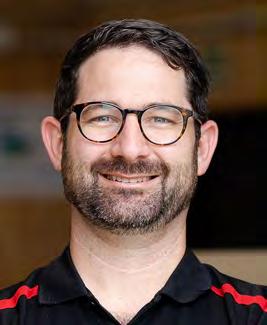
bile network tech to BOP - and now, after more investment in the BOP region, independent testing shows Vodafone offers customers the best mobile network in the BOP region.
Vodafone scored highest on mobile data performance and voice call quality. The audit report conducted by the global leader in mobile benchmarking umlaut in November 2021.
According to umlaut’s independent testing Vodafone has the best mobile network in the Bay of Plenty region, scoring 700 points out of 1000 overall. The Vodafone network is more than three times faster than any other mobile operator in the Bay, meaning Vodafone customers get the fastest mobile downloads.
The network improvements enable businesses to do what they do best, faster and more reliably, from any location. This allows them to focus on doing business and driving profits.
A robust network also means staff can work from anywhere, enabling a better work-life balance for those who want to work from home or from a bach while on holiday. To learn more about Vodafone’s 5G network head to www.vodafone.co.nz/5g/
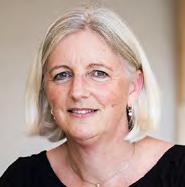
> BY ANDREA SCATCHARD
Andrea Scatchard is a Tax Partner at Deloitte, based in the Bay of Plenty. She can be contacted on ascatchard@deloitte.co.nz
s a tax professional, my work Christmas wish was for a slowdown in the pace of legislative change. 2021 was a busy year for tax with a number of significant developments with very broad application, from the change in the top personal tax rate to 39 percent, to the changes in the interest deductibility and brightline rules, to the ill-conceived proposal to do away with the concept of GST tax invoices!
The 39 percent tax rate came into effect on 1 April 2021, but the flow on effects of this will continue into 2022 and beyond.
While the top personal tax rate is now 39 percent the trust tax rate remains at 33 percent, but recent developments from Inland Revenue show that they are keeping a careful watch on taxpayer behaviour which could force their hand.
As a reminder, this is not the first time that the top personal tax rate didn’t align with the trust rate. The last time the top
personal tax rate was 39 percent was from 2000 to 2010, and the trust tax rate was 33 percent during this time. As a result we saw a lot of taxpayer activity in the use of trusts as a way to divert income to lower taxed beneficiaries.
This was a focus of Inland Revenue audit activity though this period, resulting in high profile and successful tax avoidance cases where the taxpayers were held to have implemented business structures in a way that had an intention of avoiding tax.
Tax rates misaligned
Now, with the top personal tax rate once again misaligned with the trust tax rate, Inland Revenue has stepped up their game and is using sophisticated data analytics to monitor the behavioural changes of taxpayers around reporting of the income and the use of trusts.
We have known for a while that Inland Revenue has been
developing its data analytics capabilities and that the changes that have been made to their IT systems, as well as gathering significant amounts of data from external domestic and offshore sources, have allowed them to really beef up what they can do in this space.
Top personal tax rate increased to 39 percent on 1 April 2021.

reported in relation to these individuals.
They are looking for trends that might indicate some restructuring has taken place to avoid the top tax rate change. Around half of this group of taxpayers are salary and wage earners, and around half again are related to their employer – for example as shareholders or as beneficiaries of trust shareholders.
The Inland Revenue have identified around 120,000 individuals who earned close to $180,000 in the previous years and have been monitoring in real time the monthly employment and investment information reported in relation to these individuals.
They have identified around 120,000 individuals who earned close to $180,000 in the previous years and have been monitoring in real time the monthly employment and investment information
This group in particular may be seen as being able to influence the amount of income they receive from their business personally compared to income that may be diverted to related parties and taxed at a
lower rate.
While it is acknowledged that there can be legitimate reasons for restructures or other changes, and that Covid19 has had an impact on many businesses, Inland Revenue needs to be comfortable that tax is not driving the changes they are seeing. They are taking an educational approach in the first instance and are likely to contact taxpayers they have concerns about to discuss the reasons behind any changes that have been made.
The changes to the trust reporting rules that apply from the current tax year will provide Inland Revenue with another valuable source of data relating to taxpayer use of trusts. Consultation recently closed on two documents that describe the information that Inland Revenue expects to see filed alongside trust tax returns.
As well as needing to prepare financial statements that must comply with set minimum standards, trustees are now required to disclose a lot of additional information each
year. This includes, among other things, disclosure of settlors and appointors of the trust, details of cash and noncash settlements received and distributions made (including capital distributions) and information about transactions with associated persons. It is understandable that Inland Revenue is wanting to get a better picture of how people are extracting wealth from trusts, but at what cost to taxpayers? These changes are likely to force significant additional compliance costs on trustees and we are hopeful that we may see some scaling back of the level of information required to be filed. This new trust reporting, along with the data analytics work being done, will help drive audit activity as well as inform any policy decisions regarding a future change in the trust tax rate.
If the data indicates that the trust regime has been exploited, we could well see an increase in the trust rate to 39 percent to align with the personal tax top rate for this year’s Christmas present from the taxman.
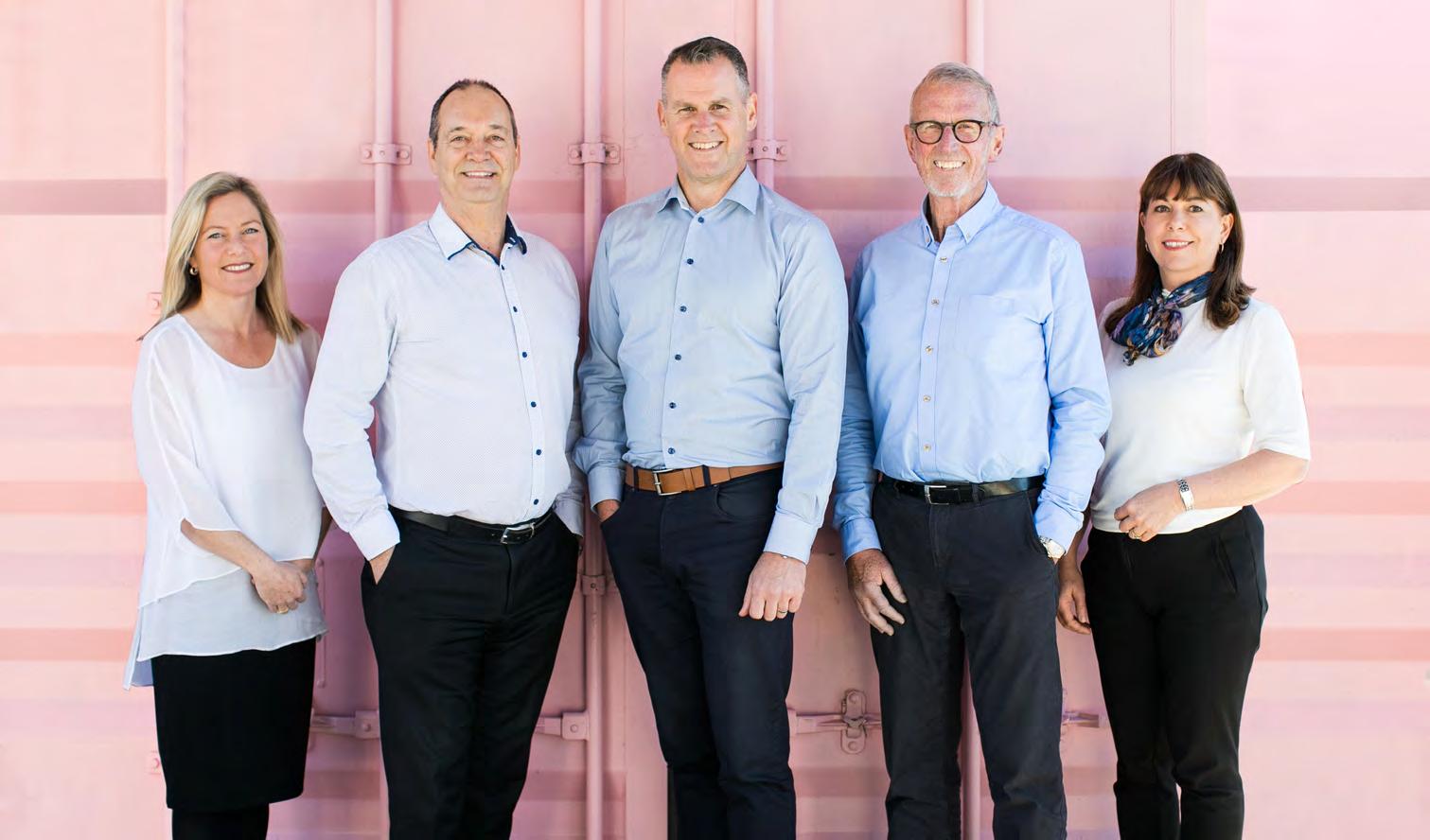

A strong online presence has never been more vital for small and medium-sized businesses. 80 percent of consumers now research online before making a purchase, and 85 percent use the Internet to find local businesses.
Nearly half (46 percent) of web users say a website’s design is their number one criterion for determining a company’s credibility. Your services, pricing, contact information and description of how you work with clients will all be showcased on your website for potential and current customers.
Choosing a website platform is akin to selecting the foundation when building your home. Everything that follows, the look, functionality, user experience, maintenance, adding on, and more will all be determined by this choice. The most important question when choosing the correct platform to build your website is what you plan to accomplish with your website.
Start with what your company needs. For example, an eCommerce brand selling shoes wants its customers to make a purchase and perhaps sign up for their newsletter. Whereas a catering company wants users to make a booking or get in contact.
It’s important to remember that a well-functioning website is well organised, fol-

lows a logical structure, and is designed to feel intuitive and easy for your target audience to achieve the goals you have set for the website. There are a lot of competing options out there when it comes to setting up a new website. Let’s look at what we call –the big five website platforms out today to better understand which platform is right for your business.
WordPress/ WooCommerce
WordPress/Woocommerce is the oldest and most popular website building platform out today.
More than 41 percent of websites on the internet are powered by WordPress, and for good reason. WordPress is open source – meaning it’s easy for developers and

> BY MARIETTE TOLMAY
Mariette Tolmay is the marketing lead at Stratus Blue. She can be contacted at mariette@stratusblue.co.nz.
designers to customise. It has over 52,000 plugins available to use and is cheaper to host than most website platforms. If you are DIY-ing a WordPress website, you will need a hosting service to create an installation, so it does require a bit of knowledge in the space before creating your own.
Wix is an easy-to-use website builder that has become very popular in the last few years. They’ve invested a lot into creating a platform that is accessible to those with minimal website building experience. The most important thing to understand is that Wix is a drag and drop website builder meaning you can drag and drop elements wherever you want to create a web page.
When you think eCommerce, you automatically think
Shopify. Shopify has established itself as one of the biggest website eCommerce platforms in the world, currently used by more than one million people worldwide.
Shopify is an eCommerce giant with a streamlined back end to help make eCommerce businesses run smoothly, with little hands-on effort.
Squarespace is known for its unique, responsive templates and its easy-to-use website builder. Many people choose Squarespace over the competition because of how fresh and modern the website templates are.
Gaining popularity is the drag and drop website builder Webflow. Many web designers choose Webflow due to the high degree of customisation and intuitive design you can achieve with this platform.
With the new year upon us, many businesses will be excited about what 2022 will bring, while reflecting on what learnings from 2021 they can take with them.
Recent research from telecommunications company 2degrees shows that business decision makers may be looking at technology and digital skills to consider the difference they can make in helping a business ‘revive’.
2021 saw 2degrees commission research for its Shaping Business Study, polling approximately 1000 business decision makers from across the country, from sole traders to organisations with over 50 employees. According to the study technology, digital skills and access were some of the key aspects helping businesses get back on track after the disruptions of the Covid19 pandemic.
35 per cent of those businesses identified flexibility to work from home as important to getting back on track, with over a quarter (26 per cent) identifying improved digital skills and access, and one in five (20 per cent) saying that it was better technology.
Andrew Fairgray, Chief Business Officer at 2degrees, says the research shows that strong digital capabilities can help businesses weather the changing landscape.
“Every business needs to be a technology company, in some way,”
says Andrew. “Technology has played a role in nearly every business’s ability to continue through the ongoing disruption of the past two years, and this will continue as the environment changes.”
When asked about the things they had done to put their business in a better position since the 2020 lockdowns, the 2degrees Shaping Business Study found that 16 per cent of businesses had invested in communication technology, while 15 per cent had invested in computers and equipment for employees to use at home, 14 per cent had trained staff with new digital skills.
Technology and digital upskilling also play a key part in businesses’ future plans. Of business leaders planning to increase investment in their business in the next year, 35 per cent were planning to invest in digital upskilling. The research shows just how important it is that all businesses have a good digital strategy and keep their technology up to date.
“The data is clear; digital skills and technology are enablers for navigating the business environment. However, the research showed us that 25 per cent of Bay of Plenty decision makers said they
Apart from the “Top five” Rocketspark – a New Zealand-owned, and -operated platform is swiftly gaining traction.
The award-winning platform interface allows businesses to create a fully customised website using elements such as images, text, videos, links, buttons, forms, and more.
The platform uses a drag and drop interface to allow users to personalise the layout of each page and control the positioning of each element.
Other features include industry-specific website templates, SEO management, social media integration, custom forms creation, subscription management, and more.
Choosing what platform fits your business is a daunting decision, especially with so many options out there.
Get clear on the goals for your website and base your decision on this and the available resources you have (ie. time, experience).
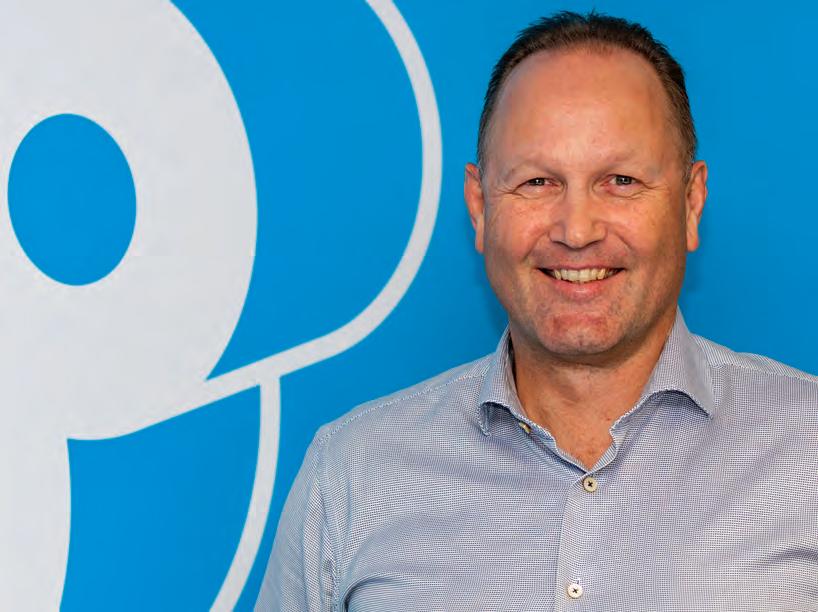
didn’t possess the digital skills needed to help their business, and that’s an area I’d encourage leaders to investigate moving into 2022,”
Andrew says.
“It’s why 2degrees Business is committed to providing fairer access to technology, for businesses of all sizes, and why we partner with organisations like social community and SME network Manaaki and the Chambers of Commerce in the Bay of Plenty.”
A further learning from the research was that 87 per cent of business decision makers in the Bay of Plenty felt confident or very confident in making technology investments, which was pleasing says Andrew, and will help set business leaders up well for the year ahead.
“It’s as clear as it ever has been that digital skills and technology can help businesses build resilience and adaptability. If you want to prepare your business to weather
any storm, it will be important to ensure that your technology, digital platforms, and abilities are up to scratch.”
Chat to the 2degrees team about your technology needs on 0800 022 002 or visit 2degrees.nz
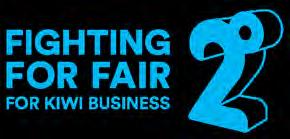
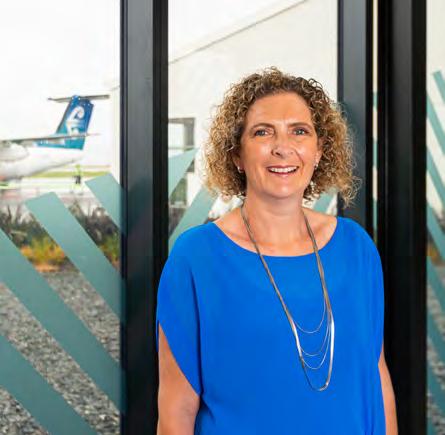
Rotorua Airport is thrilled to announce Nicole Brewer has been appointed to the top position of chief executive, commencing next year.
Ms Brewer brings with her more than 25 years’ experience in the aviation and tourism industries, including eight years’ experience with Air New Zealand and three years with Qualmark.
The 47-year-old was previously chief executive at Rotorua Airport between 2015 and 2016, stepping down to start a family while still keeping in touch as a trusted consultant.
Her passion for the tourism and aviation industries has not abated during the time she has spent at home with her daughter and says she is eager to recommence the chief executive role.
“I am deeply passionate about aviation, as well as Rotorua and the Bay of Plenty, and I’m excited to be part of the community and support Rotorua as it moves forward,” she says.
Ms Brewer says the Rotorua Airport team, under the leadership of former chief executive Mark Gibb, has done an outstanding job and she is looking forward to continuing that work.
“I thoroughly enjoyed my previous tenure at the airport, which included developing the airport terminal and land to its full potential.
“It will be great to pick things back up and help to continue the work to make the airport an asset Rotorua can be proud of.
“We are facing some challenging times as we look to rebuild after COVID-19, however with those challenges come plenty of exciting new opportunities to explore.”
Rotorua Airport Chairman, Peter Stubbs, says Ms Brewer’s strong leadership, communication skills and excellent business acumen will ensure the airport continues to improve and grow.
“Nicole creates strong teams and encourages them to reach their full potential which, in turn, will deliver excellent results for Rotorua Airport.
“With her airport management and aviation experience, coupled with her strong people management skills and adaptable, practical approach, the Board has no doubt Nicole will once again add substantial value as chief executive.”
Mr Stubbs says throughout her career Nicole has continually shown the ability to pick up new concepts and rise to the challenge and believes the development of the airport land would be no exception.
Ms Brewer’s most recent role at Air New Zealand was as their Manager of Revenue Alliances where she focused on business improvement, cost savings and streamlining systems. She was a key member of the team that put together a successful bid for an alliance with Singapore Airlines.
Ms Brewer will continue to work closely with interim Chief Executive, Logan Charters-Leahy, in the lead up to her official start on 17 January 2022.
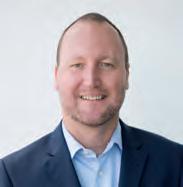

My favourite time each year writing articles on the franchise business model is looking back at what I had written the year before and looking forward into my crystal ball and predicting what’s install for the year ahead.
I get some of it right, but like the ambiguous comments of the fortune teller, some predictions become half right – or half wrong. Like my call last year that “We have historic low interest rates, which look to be around for some time and the impact on business borrowing cannot be stressed enough.”
The historic low interest rates have moved up faster than most commentators would have expected, but the “impact on business borrowing cannot be stressed enough” remains on point, and we will come back to that a bit later.
My predictions for 2022 and growth in the franchise business model will be a fine balance of factors, some of which I can identify, but not necessarily tip which way the balance will go.
The great resignation
From early on in New Zealand’s first 2020 lockdown we were questioning whether people would want to return to their business-as-usual jobs and lifestyles. There has since been much written about the great resignation. I’m not sure from
> BY NATHAN BONNEY
Nathan Bonney is a director of Iridium Partners. He can be reached at nathan@iridium.net.nz or 0275-393-022
we have that is quite happening in New Zealand, but unquestionably people are looking for flexibility in their work-life balance and most importantly, a sense of self-determination.
Invariably this leads many to purchase or start a business, and sensibly a great number of new business owners are and will continue to invest in a franchise business.
Regional migration to accelerate
As ex-Aucklanders we have been beating the regional migration drum for some time. I think it’s been heard, as Bay of Plenty and other regions are and will continue to see an influx as people moving to the regions and establishing franchised businesses. Not surprisingly, this has spiked over the Auckland lockdown.
The impact of a peaking property cycle
Last year I wrote that rising property prices were a positive for encouraging investment in franchising by both raising the general mood of the economy and potentially providing equity. My take on this for 2022 supports this comment. However, the relationship between rising property prices and investment in franchising is now influenced by a number of factors; the rate of growth has slowed and many

may be looking to exit the property market.
The above forementioned regional migration means some may look at selling in Auckland, and buying a franchised business and house regionally. The above all sit in the pro-growth bucket, but there are an equal number of factors that may slow growth over the coming year.
As mentioned, interest rates have moved from the historic lows and have done so relatively quickly. The impact on business borrowing can be significant, in percentage terms if funding is “against the bank of house”, interest costs could have more than doubled in the past year.
Additionally, the cautious will not only be looking at what has happened with rates but looking forward and wondering where they may head. And, so are the banks in terms of looking at affordability and repayments.
I would suggest more importantly, credit conditions have changed in the past 12 months and it will continue to become more difficult to borrow to establish or grow businesses. A positive for the franchise business model as I have said many times, is that success rates are higher and there is generally more information available including benchmarking, making it potentially easier for the banks to
review and fund versus a standalone business.
A quick stroll through Bayfair or along the Mount main street will demonstrate that staff shortages are rampant. I cannot see what is going to change positively in this regard in the short to medium term and suspect that inflation and wage pressure will only make this worse.
We’re aware of a number of franchise businesses whose growth is being directly impacted by staff shortages. The flipside is franchise businesses that have a low labour component and or man-power requirements are likely to flourish.
Disruption to supply chain
Ongoing disruption to the supply chain will continue to impact all business models and sectors, the extent will depend on several factors including the mix of domestic and or international supply chain, the level of vertical integration and the reliance on certain sectors such as building and construction.
There will be an associated varied impact on franchised businesses, but some may have an advantage by having established and larger purchasing and negotiation ability, perhaps vertically integrated supply chains versus stand alone businesses.
New Zealand has had taxes ever since a formal government was established. When LieutenantGovernor Hobson proclaimed British sovereignty over the North Island on 21 May 1840, the tax on imports came into effect. Over 60 percent of tax revenue came from alcohol, tobacco and sugar. In essence, most tax was voluntary, if you didn’t smoke, drink alcohol or tea, or use sugar, you paid very little tax.
The first permanent tax taken directly from the taxpayer was implemented to pay for the cost of the New Zealand wars in the 1860s. The wars were funded largely by borrowing, so new taxes helped to repay these loans.
Through the 1870s Premier and Treasurer Vogel borrowed heavily to build infrastructure. By 1877 there were long and serious Parliamentary discussions on who was benefiting most from government spending, and who was paying the most tax to support it.
The Liberal Party was in power from 1891 to 1912 which left the legacy of the Income tax and progressive rates as we know it. These were introduced in 1891 and became central aspects of the New Zealand tax system.
In 1958 the New Zealand government brought in a Pay As You Earn (PAYE) income tax. Under PAYE tax is deducted fortnightly from wage and salary earners, so people never saw the money and

> BY VALERIE ROWE-MITCHELL

Accounting and other money matters with Valerie Rowe-Mitchell, owner of Emerald Business Advisers. Valerie can be reached on 07 579 5777 or valerie@emeraldbusiness.co.nz
the government got the tax revenue immediately.
Over decades governments have changed tax rates to pay for social spending like education and health, or to woo voters.
Over the 25 years since 1960 the burden of taxation had shifted so that a heavier load was carried by personal income tax. This happened through what is known as ‘fiscal drag’. The tax scale did not change, but incomes increased, elevating people into higher tax brackets each year.
By 1985 middle-income earners, such as school teach-
ers, were paying high marginal income tax rates. Fiscal drag had severe political consequences.
In the 1980s a Labour government made major changes to taxes. Tax incentives were removed and personal income tax rates were simplified. There were just two personal income tax rates: 24 percent on income up to $30,000 a year, and 33 percent above that.
In the 2000s New Zealand taxes were about 39 percent of the total value of goods and services produced each year (GDP).
This put New Zealand roughly in the middle of tax levels for the OECD (a group of 30 modern economies).
Up to recent times New Zealand’s tax system was relatively simple when compared to other countries. However, an increase in the top income tax rate, the introduction of the Brightline test and non-deductibility of interest represents ad hoc responses without a coherent strategy. This is likely to result in policy outcomes falling well short of objectives, and potentially serious unintended consequences.
This article is based on the information from The Encyclopedia of New Zealand and Working paper 03/2021 by Norman Gemmell.
The Bay of Plenty is well-positioned to ride the wave of strong primary sector returns being enjoyed by horticultural and pastoral growers this season, with good rainfall pre-Christmas ensuring a positive start to the second half of the farming and orcharding season.
By RICHARD RENNIE
The latest ANZ commod-
ity report records record
10-year highs being enjoyed in the pastoral sector, while also reporting Zespri orchard gate returns at their second highest ever.
For the Bay of Plenty’s 524 dairy farmers, Christmas will be looking particularly rosy thanks to some generous pre-Christmas tropical rainfall.
Fonterra has also raised its forecast 2021-22 mil price payout by 30c/kg milksolids (MS) to a mid-point of $8.70/ kg. For the first time ever there is the real prospect that payout could reach $9.00/kgMS.
Similarly, sheep and beef farmers in the region continue to enjoy historically high global prices for their red meat, with little sign Chinese appetites are abating. Farm gate lamb prices continue to sit over $9/kg carcass weight with global supply tight, while beef enjoys a $6-plus/kg value.
Season shaping up well Bay of Plenty Federated Farm-
ers president Darryl Jensen says the season is looking to shape up well, with plenty of surplus feed on hand for silage harvesting heading into mid-summer.
However, he cautions while the payout figures are undeniably positive, farmers like all other businesses are facing a raft of cost increases that are now well into double digit percentages.
“There are costs coming through in all areas. I recently ordered a new topper, which was to cost $8500, only to finally arrive and be costing $15,500, of which $3500 was just the freight getting it here.”
He said a tight labour market was also hanging over the sector, and his advice was to do all possible to keep whatever good staff farmers already had, with few to choose from if they left.
This also applied to the rural contracting businesses in the region, and operators were already doing long hours to keep up with seasonal harvesting demands. Jensen said with the heavy pre-Christmas rainfall and
ensuing grass growth, those demands were only likely to grow heading into later summer.
Late November marked the final shipment of Zespri kiwifruit for the season, with a quiet sigh of relief from the industry in an export environment complicated by shipping issues.
Largest Sungold harvest ever
The 1800 tonne shipment heading to Tokyo also signalled the end of the largest SunGold harvest yet, with just over one hundred million trays sold into export markets for the first time, alongside 77 million trays of Green.
Growers were also rewarded with record payments for the 2020/21 season thanks to Zespri enjoying a 16 percent increase in operating revenue, accompanying the 10% increase in global sales volumes. Average per tray returns for SunGold were $12.46 a tray.
Market signals for the coming season remain strong,
Social norms have shifted as a result of Covid19 restrictions. While kids are often quick to adapt to new trends, changes to the way we’ve always done things become more challenging as we get older.
Have you noticed that the people struggling with the Covid app at the front door of the shop are often older – the kids rock up, raise their smartphones and cruise-on through.
Meanwhile mum is still growling at Dad at the door explaining that he needs to open the app before he points the camera at the QR code – “No, not in selfie mode, turn the phone around the other way.” It should work; Why hasn’t it? Stupid phone! Stupid rules!
The kids knew this was going to be embarrassing (as usual), so they’ve bolted. Dad’s decided the pen and paper sign-in is probably a better bet for him from now on and Mum and Dad’s bickering continues. Why, oh why, does it never work for Dad?
But its not all about apps and Covid scanning and inappropriate emojis, not checking social media, etc New challenges
Covid-19 has bought with it a plethora of new challenges far beyond scanning at the door of the supermarket.
It all began a year ago, when we weren’t required to wear masks, but we had to learn not to shake hands or hug – having been bought up to believe not shaking hands was a sign of disrespect and being a cold-fish non-hugger was bad form, even if you had no relations in Italy, it became excruciatingly awkward for many of us to simply wave at the boss when you were only a meter apart, or to butcher casting a heart fingers meme thing at your aunty rather than giving her a hug.
Fast forward a year and masks are de rigueur – even Dad’s wearing one, though as usual, his just looks embarrassing. But this new social norm brings with it a few real issues. New issues.
I have been the first to say, in a lecturing way, “Don’t txt, phone!”
Why? Because nuance is so often lost and tone misconstrued in a txt; Sarcasm is often mistaken for criticism and jokes are not read as jokes.
‘You are such a dick’ can so easily be misinterpreted as, ‘You really are such a dick’, rather than, ‘You are such a dick’ as a term of endearment – you get it!
Leaving the door open
By insisting we all wear masks, that same door for misinterpre-
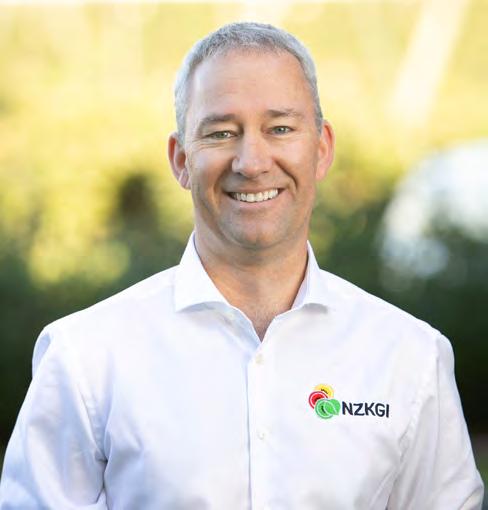
with planning well underway to mitigate anticipated continued shipping issues. Forecast orchard gate returns for the 2021-22 season have SunGold at $10.92 a tray and Green fruit at $6.34 a tray.
Zespri chief global supply officer Alistair Hulbert says along with continued shipping issues globally, the sector also faces a labour shortage of 6500 staff, requiring close co-ordination between all parties to ensure crop is harvested and shipped in a timely manner.
Colin Bond, chief execu-

tive of NZ Kiwifruit Growers Incorporated, said prospects for locals wanting to work in the sector have never been better, and a recent industry survey reports high levels of satisfaction among workers.
“There are also indications employers are more in tune with the requirements of workers, particularly around flexible working hours.”
Remuneration in the sector now has the hourly rate set against at least the living wage rate. Older workers are also filling seasonal vacan-
cies, with those aged 51-65 accounting for 15 percent of a recent employee survey.
Bond says the 2022 harvest is predicted to be another record breaker, and work continues between the industry and government departments to attract more people to the sector.
“Kiwifruit is a fantastic industry to work in. Every time we’re putting on an additional 50 ha of fruit an orchard manager is required. These are great jobs that pay over $100,000 a year in some cases.”
Among Bay of Plenty’s main primary exports, forestry has hit something of a low point with log prices dropping sharply at the wharf gate level as Chinese prices ease and high shipping costs continue to erode profit margins.
The cost of moving a log from New Zealand to China peaked at US$75/cubic metre, but has eased back to US$65/ cubic metre, still a fourfold increase on values over a year ago. With prices paid equating to about US$150/cu metre, almost half the log’s value is being lost to shipping costs.
One big cloud on the horizon for all exporters is securing sufficient space for exports, and expectations are that shipping capacity will remain constrained until well into the new year until more shipping assets were commissioned.
> BY ALAN NEBEN
Alan Neben is a Mount Maunganui local and experienced New Zealand Publisher. He unequivocally supports mask wearing. alan@bopbusinessnews.co.nz

are de rigueur thanks to Covid – especially at the supermarket!
tation and unintended offence has been left wide open. Traditionally if I make joke in public, say by telling the obviously pregnant shop assistant she should eat less, my ridiculous accompanying grin might alleviate potential offence (though none of the embarrassment of such an inappropriate ‘dad joke’); Put a mask over my mouth and that throw away bad-taste quip, without the
accompanying grin, leaves a void which is filled immediately with offence and disgust.
A smile has always been able to be used to disarm –who cares if Brad Pitt is a serial killer, he’s got a smile; Forget Julia Roberts job title, that smile could melt ice.
So when I recently overstepped the crime scene queue tape at the supermarket, I felt very offended when the
checkout operator glared at me and said, “Get behind the line, SIR!” I couldn’t see her mouth, so I wasn’t sure if she really did despise me for my boundary indiscretion … or was I reading her all wrong? I immediately delivered my response, a practised clenchedteeth cringe (a visual version of, ‘OMG I’m so sorry’). Did she appreciate my contrition, or was my deference com-
pletely lost on her? Hard to tell when you can’t see the face behind the mask. The moral of the story, “Don’t step over the line with a mask on and expect a flash of your pearly whites to get you off with just a warning.”
I’m not an anti-masker, on the contrary I love having somewhere to hide my reactions when in the company of fools or really badly dressed people. But today I made a mistake which I hope to never make again: I arrived at the supermarket in good humour. I scanned in almost without breaking stride (yes!) and managed to find almost everything on the list without any re-navigation. Some of the shoppers seemed a bit aggressive, but hard to tell when they have masks on. To my horror mid-bathroom supplies aisle, a humiliating revelation befell me – I had forgotten to put my mask on.
Two-hours later as I write this, I am still traumatised. Questions still whirl in my mind. How many people saw me? Did they assume I am an anti-masker? An anti-Vaxer? Worse still, a Trumper? OMG, I am so embarrassed. To those who my actions offended, “I apologise for any offence caused”.
Social norms have shifted, I am not anti-mask, I am simply easily distracted.
The Golden Triangle continues to house the lion’s share of New Zealand’s economic productivity and it remains on a growth trajectory.
The upper North Island’s “Golden Triangle” zone formed by the Auckland, Waikato, and Bay of Plenty regions, retains its badge as the dominant focus of property development activity in New Zealand.
It’s responsible for nearly 60 percent of the country’s building consents issued annually and where big business is consolidating.
Bayleys Research’s latest Golden Triangle Overview, part of its Infrastructure series of reports, underlines the major contribution the three provinces make to New Zealand’s productivity and gross domestic product (GDP).
Accounting for just over half of New Zealand’s population (50.18 percent), the zone accounted for 52.4 percent of New Zealand’s GDP growth in the year to March 2021 and $11.978 billion – or 57.12 percent – of the value of all building consents issued. That represents an increase of more than $1 billion in consents since 2019.
Robust across all sectors
Ryan Johnson, Bayleys’ national director commercial and industrial says the Golden Triangle’s robust new development activity is across all property sectors and despite Covid disruptors, he expects this dominance to persist in the medium to longer term.
“Given the continued demand being demonstrated by the market, the Golden Triangle’s supremacy as New Zealand’s economic powerhouse looks certain to endure.
“Once the domain of private investment money, the Golden Triangle zone is now attracting significant institutional and listed development investment – along with central government input.
“An example being Tauranga-based property entity Classic Group which has partnered with the NZ Super Fund to form a new land development company and will leverage its scale and capital to increase housing supply in New Zealand, with a focus on the Auckland market in the first instance.”
In Tauranga, Mark Walton, Bayleys’ commercial and industrial manager says the green light for Winstone Wallboard’s new $400 million plasterboard manufacturing and distribution facility in the Tauriko Business Estate, is a standout injection of confidence in the region.
“The 200-ha Tauriko estate, which incorporates one of Australasia’s largest industrial subdivisions, continues to account for the bulk of the current industrial building activity in Tauranga, however, future development land in the precinct is constrained.
“Design-build opportunities are filling up and industrial occupiers will
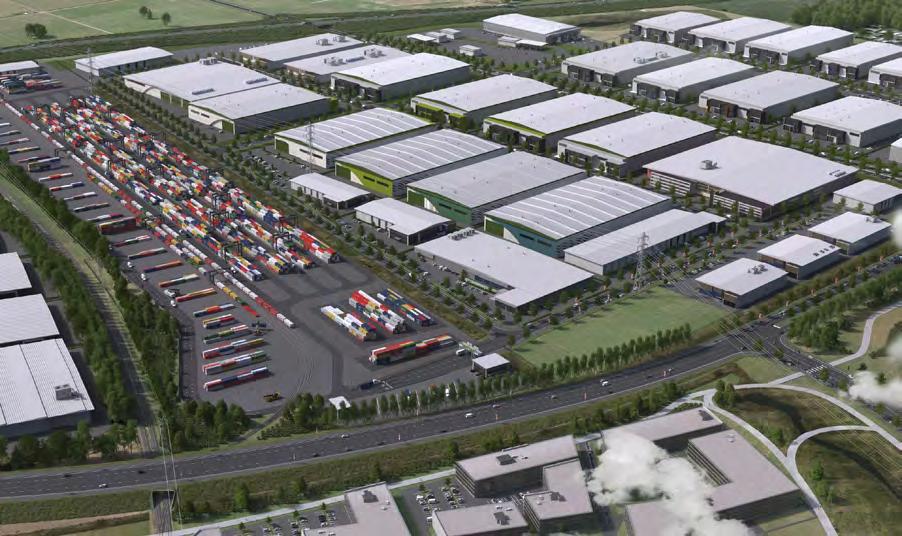
need to act quickly to nab space – particularly for large footprint options. There’s a chronic shortage of business-zoned land in the region and the squeeze is on to meet the demand.”
Meanwhile, the Rangiuru Busi-
four stages, accommodating large footprint industrial facilities and having a dedicated interchange connecting it to the Tauranga Eastern Link expressway and a direct rail link to the Port of Tauranga.
Given the continued demand being demonstrated by the market, the Golden Triangle’s supremacy as New Zealand’s economic powerhouse looks certain to endure. Once the domain of private investment money, the Golden Triangle zone is now attracting significant institutional and listed development investment –along with central government input.” – Ryan Johnson
ness Park near Te Puke in the Bay of Plenty, will open up around 178 hectares of land for development across
David Cashmore, Bayleys Waikato’s commercial manager says there has also been rapid uptake of sites in
new subdivisions on the city’s northern boundary, such as the 60-hectare Te Rapa Gateway alongside State Highway 1.
Cashmore says without doubt, Tainui Group Holdings’ (TGH) new Ruakura Superhub that’s emerging out of the ground alongside the Waikato Expressway, will be transformational for Waikato’s business fundamentals.
“TGH’s 490-hectare master-planned development on Hamilton’s eastern fringe has almost 200 hectares allocated for logistics and industrial uses alone and will boast a substantial inland port.
“Once up-and-running, this precinct will kick the regional economy – and the part it plays in the broader Golden Triangle’s GDP – into a whole new gear.”
To access Bayleys Research’s latest Golden Triangle Overview, head to bayleys.co.nz/research/ commercial

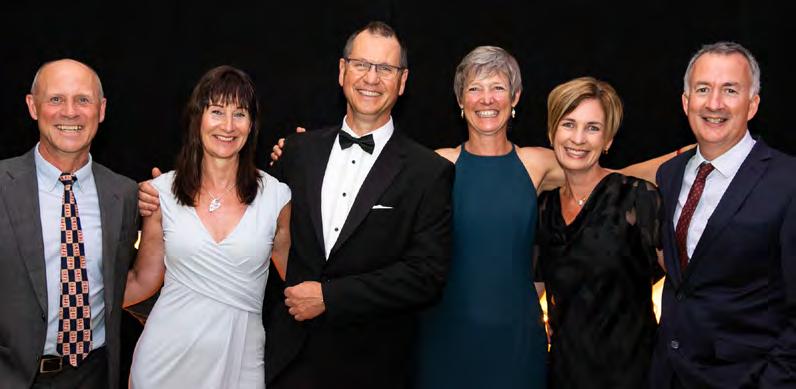
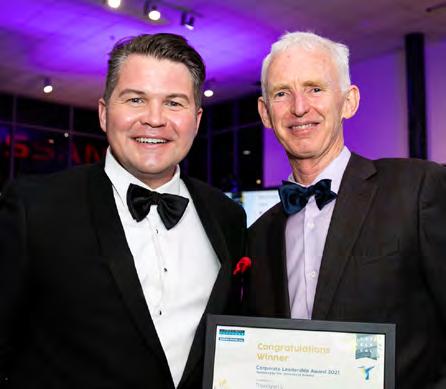

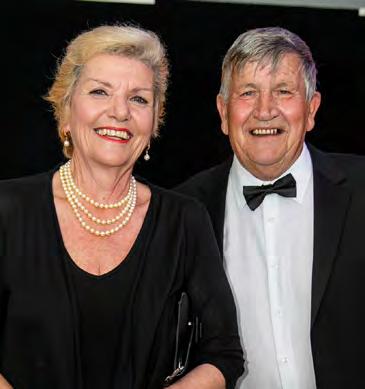
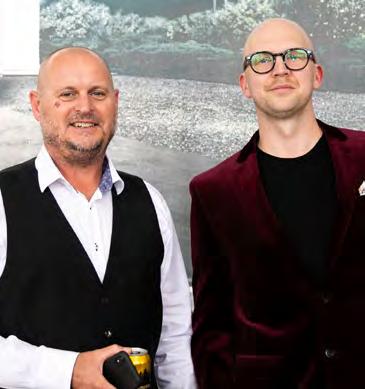
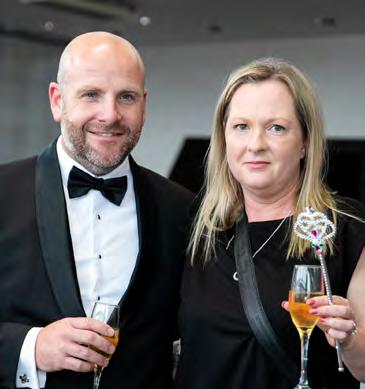
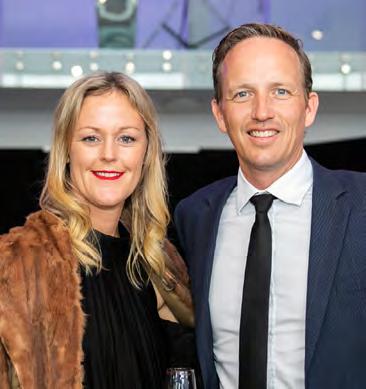
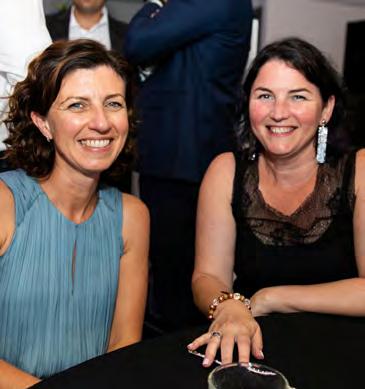
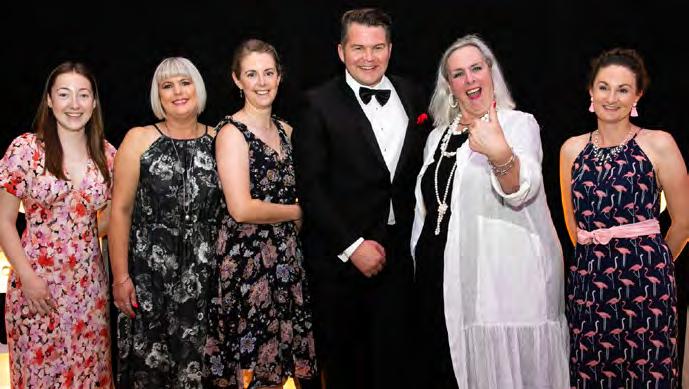
1 8 4 9 10 6 11 12 2 3 13
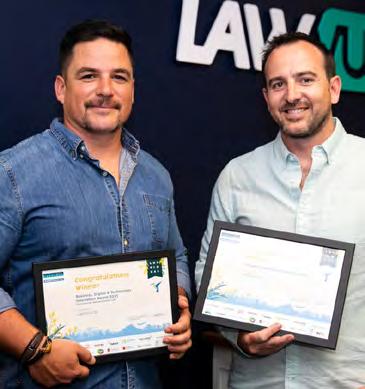

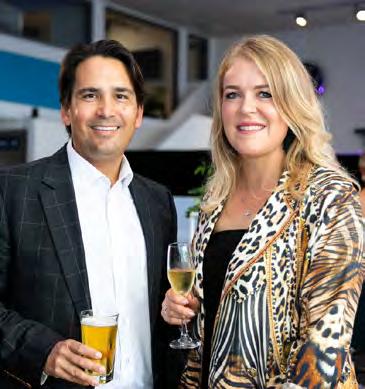
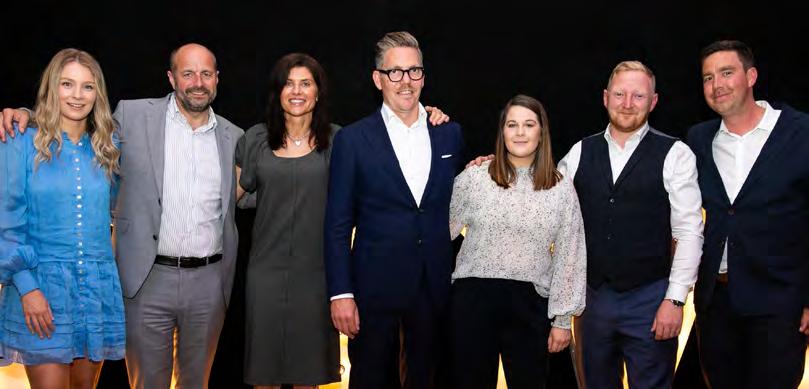
Eighteen months ago, the world changed overnight. Billions of people were locked in their homes, flights around the globe were grounded, and offices, streets and schools lay abandoned. It was the stuff of Hollywood.
The immediate change to nearly every aspect of our lives was stark – not just in terms of our personal lives, but also our professional ones. As a communicator, Covid-19 has impacted my work and taught me a lot. I have been trained to communicate in a crisis, to get messaging out swiftly and effectively, and to adapt, but not on anything like this scale or magnitude before, or with as big consequences.
So, what am I going to take away from the pandemic? And what have I learned from the way that politicians, news outlets and other organisations have dealt with the past 18 months?
Empathy above everything
Regardless of their audience, organisations have had to adopt a different tone. The time immediately following the lockdowns required a more empathetic approach, with an open dialogue that has mostly continued through-
out the pandemic.
Internally, the best communication teams and leaders were in constant contact with their employees, checking in on their wellbeing and keeping them engaged in strategic decisions.
Externally, honest conversations were had with customers about product delivery and internal workings of the organisation. People responded well: in times of crisis, we need the transparency and human connection more than ever, so leading with empathy helped us all feel like we were in it together.
This was also apparent in communication about the vaccine. While uptake rates are fairly high in New Zealand, there has still been vaccine hesitancy from a large section of society. A large body of research suggests people don’t refuse vaccines due to a lack of information, but instead because of core moral beliefs. Studies show that when there is acknowledgement of fears around public health interventions, such as politi-
cians publicly recognising the negative impact lockdowns have on people, there is more likely to be acceptance and compliance of the measures. In essence, people that demonstrate empathy are more effective communicators.
Embracing change
We all know life throws curveballs and we are in a constant state of flux, but I think many of us assumed we were in more control of that change than we actually are. When things are changing at the drop of a hat those responsible for an organisation’s communications must be adaptable. People look to them to provide vital information and to be the gateway between them and their workplace, government and vital services.
Overnight, schools closed, businesses shut their doors and new laws came into effect within hours of legislation being announced. Getting the right message out at the right time was crucial. Things were evolving so rapidly that acting
Overnight, schools closed, businesses shut their doors and new laws came into effect within hours of legislation being announced. Getting the right message out at the right time was crucial.


> BY JAMES HEFFIELD
Director of Bay of Plenty marketing and PR consultancy Last Word. To find out more visit lastwordmedia.co.nz or email james@lastwordmedia.co.nz.
quickly, clearly and creatively was crucial to helping people adapt to the new way of life.
The New Zealand government was praised for its consistent and reassuring messages, given in real-time, and many think this was a key pillar to their initial success in handling the pandemic.
Key takeaway
This pandemic has been a learning curve. Too often, poor communication has led to significant impacts on people’s lives, leading to heartache and struggle. But there
As 2021 draws to a close, business owners have had another year with huge challenges to navigate our way through, along with the ongoing disruption to life as we once knew it. This year, particularly the past few months has seen many changes to the way in which we do business and employ our staff, and in fact live as individuals.

>
BY KELLIE HAMLETT
Talent ID are Recruitment Specialists and can support you through your recruitment process. Please feel free to talk to us about this by calling 07 349 1081 or emailing kellie@talentid.co.nz
here has been a lot to take on board, digest, and then translate into our businesses and to our staff, customers and suppliers.
Whilst Covid-19 has continued to dominate our landscape, unemployment has dropped significantly. Many sectors have been booming, but with the reduced ability to source labour, locally and from overseas, this has really affected growth and productivity levels, not only for seasonal operators but this has flowed through into skilled and technical roles significantly. It seems as if most sectors are experiencing labour shortages to some extent, and this is a nationwide issue.
partially from home and the office. This provides for the best of both worlds, the ability to work from a flexible home environment, when and how it suits, whilst also having the ability to physically interact with workmates, collaborate and communicate in a way which working remotely just doesn’t allow for.
have been some beacons of light, in particular the governments and organisations that were able to adapt swiftly and with empathy, leading the way with their decisions and communications. They were able to largely avoid conflict, create a sense of togetherness, and ultimately save lives and livelihoods.
We are still living through the turmoil, but there are many valuable lessons we’ve all learned. If we can use them when communicating through future crises, there’s a better chance our response will improve the next time around.
Signing off
This is my last column for the Bay of Plenty Business News –at least for now. I will be relocating to Wellington, where I started my communications journey, and swapping sunny Bay of Plenty days for windy Wellington ones. I’ve thoroughly enjoyed writing for all of you over the past few years and I’ve appreciated the feedback and thoughts some of you have shared in response. Thank you all for reading. Enjoy the holidays and stay safe over the Christmas break.

and their values. It’s living and it’s fluid.
As the country moves into the new traffic light system we may see more active candidates wanting to relocate to the regions – however this has not been evidenced yet. The new year may well show some movement.
see a return to those “old working days”.
Last year, not long out of our Level 4 lockdown, one of my articles touched on the new working norms that have surfaced post lockdowns. Certainly, businesses have had to pivot and change, and now adapt to living with Covid within our community as an ongoing risk. The way in which we work and do business has changed immensely and it is doubtful that we will
We have evolved – and some of the aspects of this evolution are actually quite good. So how can we take the best of that and adapt it back in to a sustainable and workable business model. For example, working from home has certainly had it’s advantages, but now many companies (and employees) are wanting to be back in the office for a variety of reasons. There is less of a reason to be working from home and a trend to get back to business as usual.
This is leading us to the concept of the hybrid working model – many of you will already be doing this, which is essentially a mix of working
Working from home is great, most of us love it – but just not every day. Talking, collaborating, joking, grabbing a coffee, planning, executing, and the team spirit are all key things that I know I missed about being in the office and having my colleagues around me. It’s also got to the point where the office has less distractions. Giving people a reason to come into the office is key. The value in a team is exactly that – they are a team and time together is valuable should be valued. Culture doesn’t come down to the physical environment, its driven by the people within your team – the way they work, the way they think,
I think one of the biggest challenges for HR leaders over the past two years has been around the fragmented workforce. Employees want and expect flexibility now, they want autonomy around how they work and structure their working week, and it’s proven that it works. It’s the sense of team that will draw people back to working from the office, and the flexibility that provides the balance.
We now need to align businesses strategically to ensure that our people and the culture that’s been built over many years adapts to accommodate these new norms – accommodating new working styles and continuing to building strength in people.
One way includes focusing on a theme that binds all employees together and concentrating on the core aspects of the leadership team and how their actions and behaviours impact others. Examples on the ground level include perhaps by making a day of the week that everyone is in the office - covering off some of
the important face to face messages so that the whole team is on the same page, perhaps a team activity, brainstorming, and some time for social interactions.
This allows and encourages continuity of social interactions between team members and essential face to face communication and collaboration. It brings the team together in a way that can’t be done via email or zoom. Ask your employees for ideas around the redevelopment of the company values and culture, try them, analyse the results. What are others doing? What can you do better? What is not working for you anymore? Great leaders look within and ask questions of their team. Without a doubt the year ahead is going to present more challenges, new working landscapes and rebuilding of a positive and encouraging environment that fosters collaboration and teamwork.
With change at all levels we’ve had to be resilient and strong and still have much to be thankful for. Wishing you all the very best over the coming festive season and beyond.









